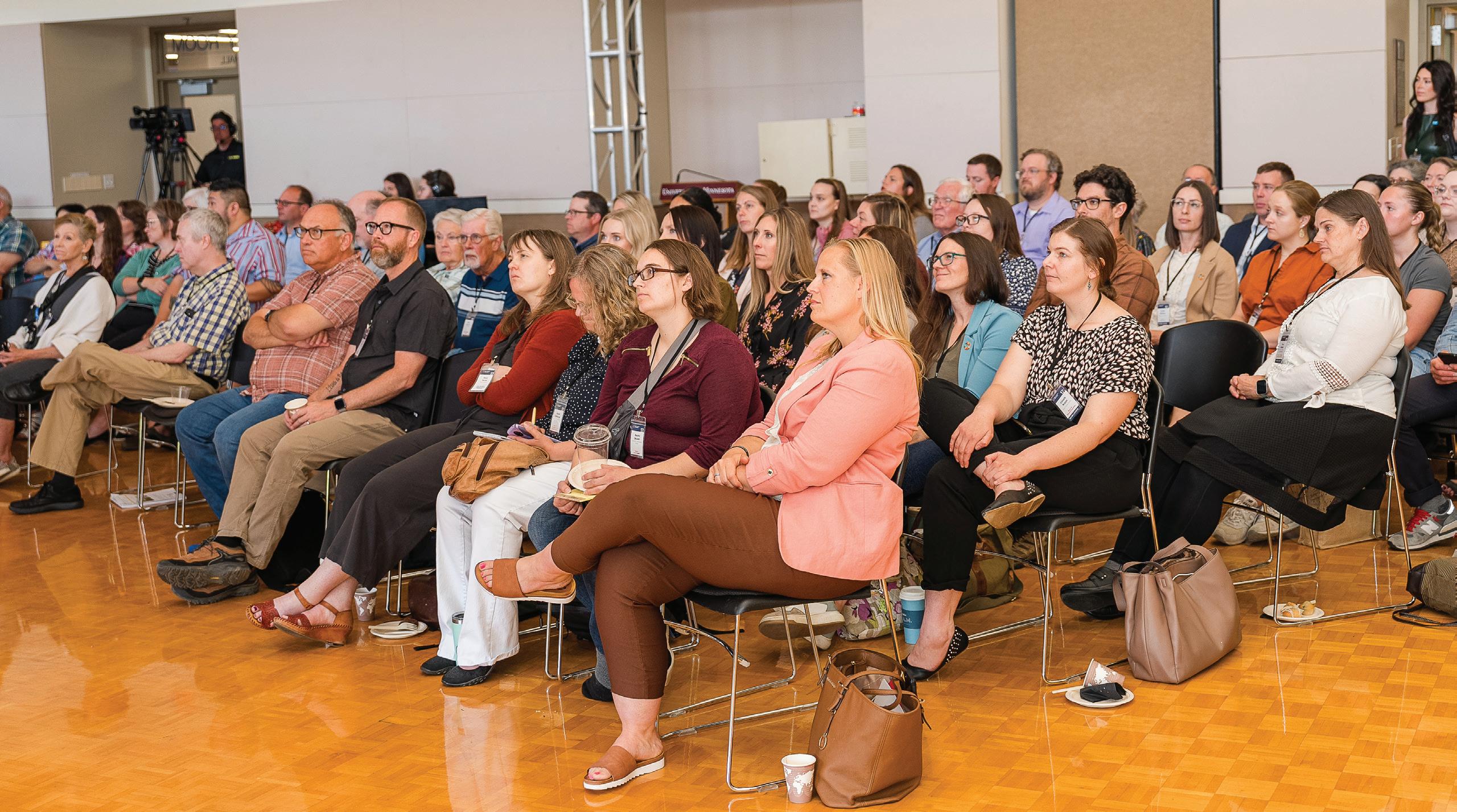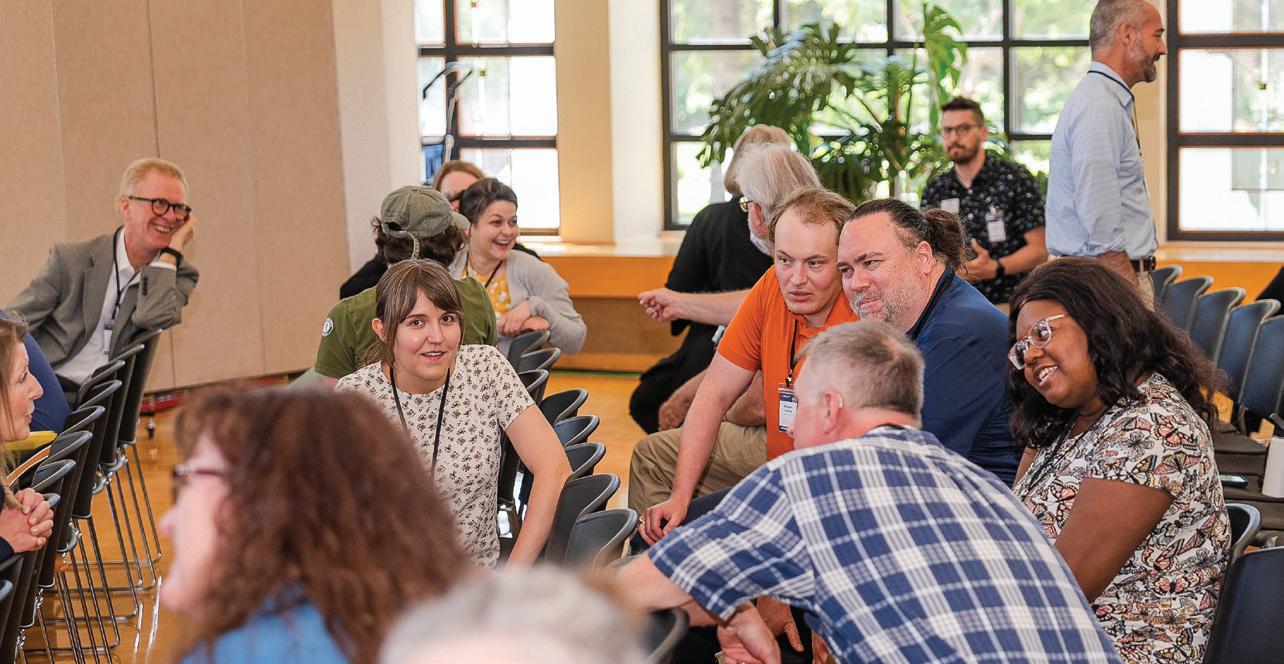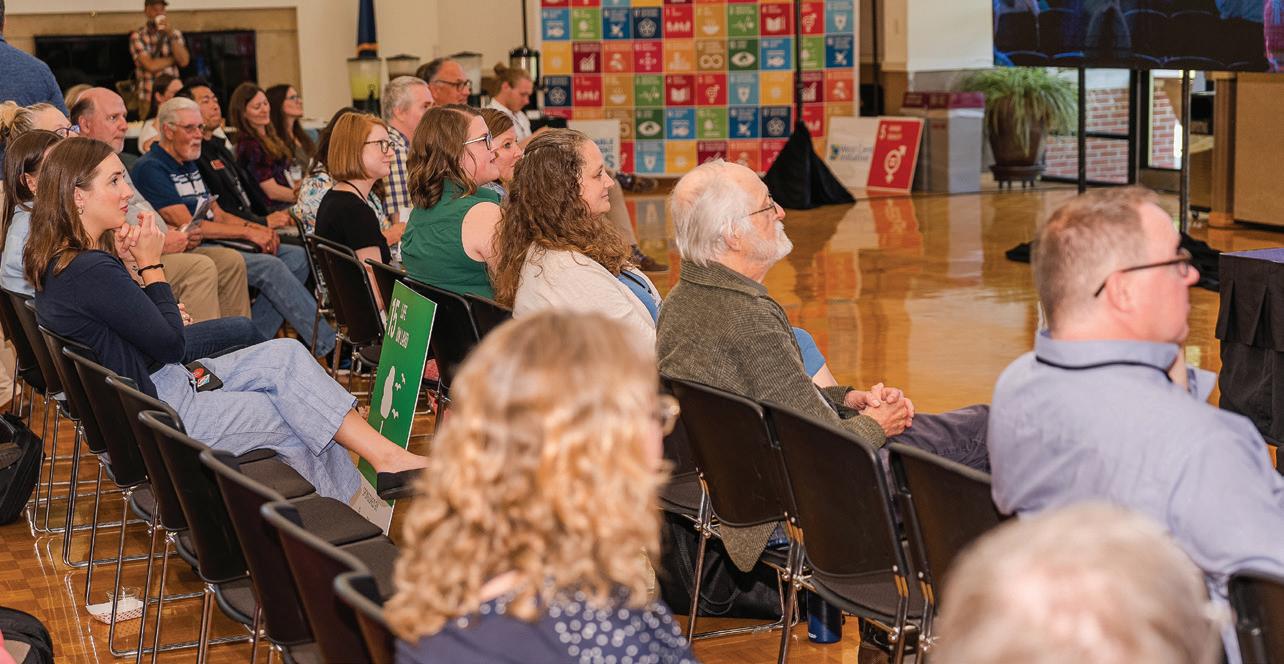




Rooms 1-7 | 10 Rooms 8-9 | 11 Rooms 10-16 | 12 Rooms 17 | 13 Discussion Summaries | 14-30 Room 1 | 14 Room 2 | 15 Room 3 | 16 Room 4 | 17
Room 5 | 18 Room 6 | 19 Room 7 | 20
Room 8 | 21
Room 9 | 22 Room 10 | 23 Room 11 | 24 Room 12 | 25 Room 13 | 26 Room 14 | 27 Room 15 | 28 Room 16 | 29 Room 17 | 30
17 Rooms is an initiative created by the Brookings Institution and The Rockefeller Foundation to advance progress towards the United Nations Sustainable Development Goals (SDGs). The concept behind 17 Rooms is straightforward yet innovative: it convenes experts and practitioners in 17 groups, each dedicated to one of the 17 SDGs. These groups, or “Rooms,” work both independently and collaboratively to devise actionable strategies, share insights, and explore cross-cutting solutions that can accelerate the achievement of these global goals. By fostering a collaborative environment, 17 Rooms enables participants to focus on tangible actions rather than just policy discussions, ensuring that their efforts translate into real-world impact.
Each “Room” in the 17 Rooms initiative is composed of a diverse mix of stakeholders, which might include government officials, private sector leaders, academics, community members, and more. This diversity ensures a rich exchange of perspectives and expertise, enhancing the quality and feasibility of the proposed solutions. Participants in each Room engage in a series of facilitated discussions, where they identify key challenges, set priorities, and develop specific, short-term actions that can be implemented within a 12- to 18-month timeframe. This action-oriented approach is a core feature of 17 Rooms, as it emphasizes immediate steps that can drive significant progress toward the SDGs.
One of the unique aspects of 17 Rooms is its emphasis on collaboration and integration across different Rooms. While each Room focuses on a specific SDG, the initiative encourages participants to explore synergies and interconnections among the goals. This holistic approach recognizes that many SDGs are interlinked and that achieving one goal can have positive ripple effects on others. By promoting cross-Room dialogue and cooperation, 17 Rooms aims to create a cohesive and integrated strategy for sustainable development. This collaborative framework not only fosters innovation but also ensures that the efforts of different groups are aligned and mutually reinforcing, maximizing their overall impact. 17rooms-mn.com
On June 12, 2024, event partners West Central Initiative, the University of Minnesota Morris, and the City of Morris’ Morris Model, held 17 Rooms - West Central Minnesota. This vibrant gathering brought together approximately 175 participants from across west central Minnesota and beyond. Hosted by the charismatic Tane Danger, the event featured two panel discussions that provided a comprehensive overview of the current progress and challenges associated with the SDGs. The panels, which included experts from various sectors, highlighted the importance of localized efforts in achieving global objectives. The discussions set the stage for the collaborative sessions that followed, where attendees were divided into 17 Rooms, each focusing on a specific SDG.
Each Room was led by two or three dedicated Room Leads who guided the conversations and facilitated the development of actionable strategies. These leads brought a wealth of experience and expertise, ensuring that the discussions were productive and inspiring. Participants engaged in deep, meaningful conversations, sharing their insights and working together to identify key priorities and steps. The beautiful weather added to the positive atmosphere, allowing guests to network and brainstorm in a relaxed environment. This fostered a sense of community and collaboration, essential for driving progress toward the SDGs.
Over the course of the event, participants at 17 Rooms - West Central Minnesota made significant strides toward developing practical solutions to implement within the next 12 to 18 months. The event underscored the collective commitment to meaningful change. Leveraging diverse perspectives and expertise, 17 Rooms – West Central Minnesota laid the groundwork for impactful actions on sustainable development. As the event concluded, there was a palpable sense of optimism and determination, with all involved ready to continue their efforts and make a tangible difference in their communities and beyond.
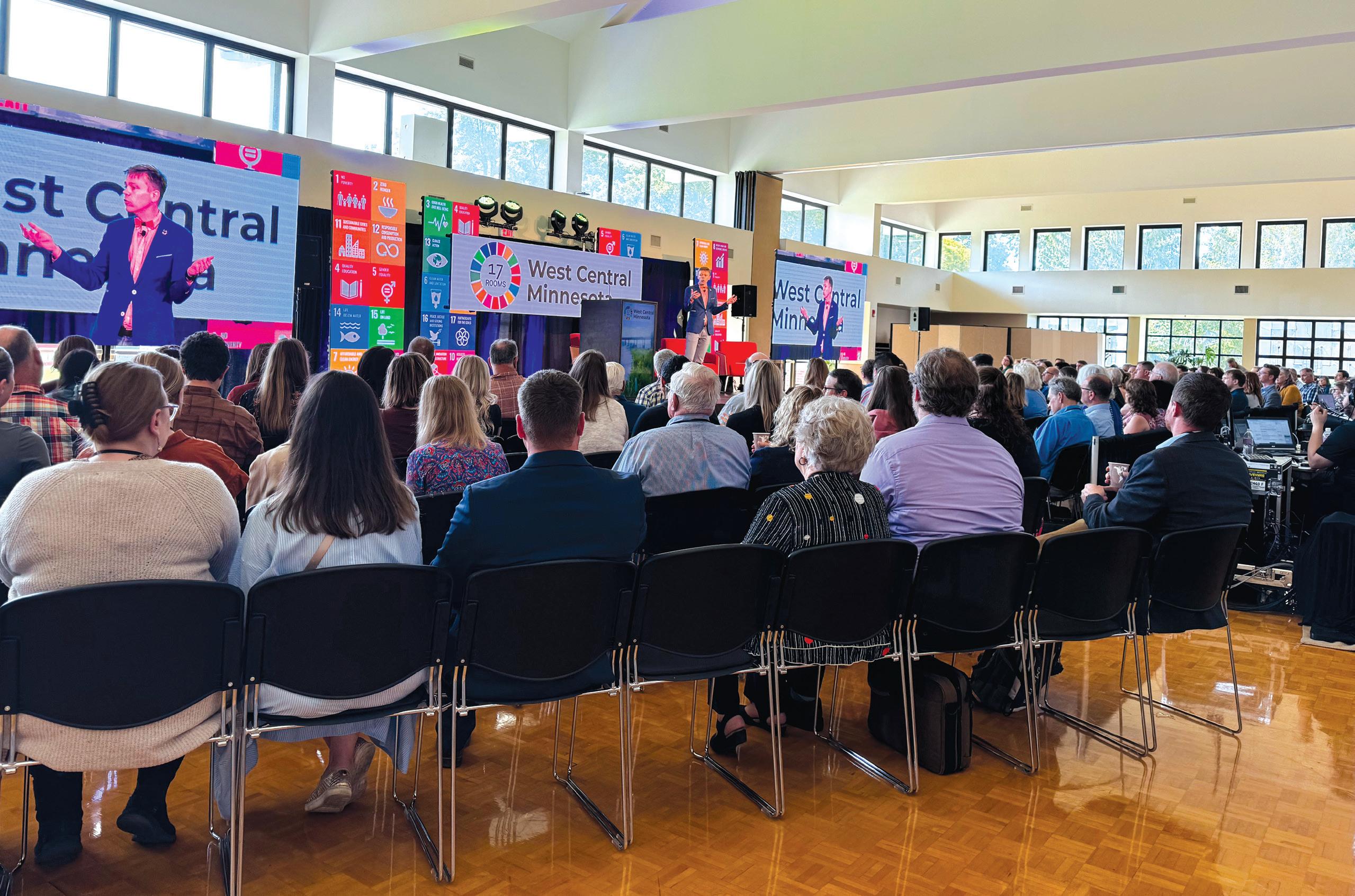
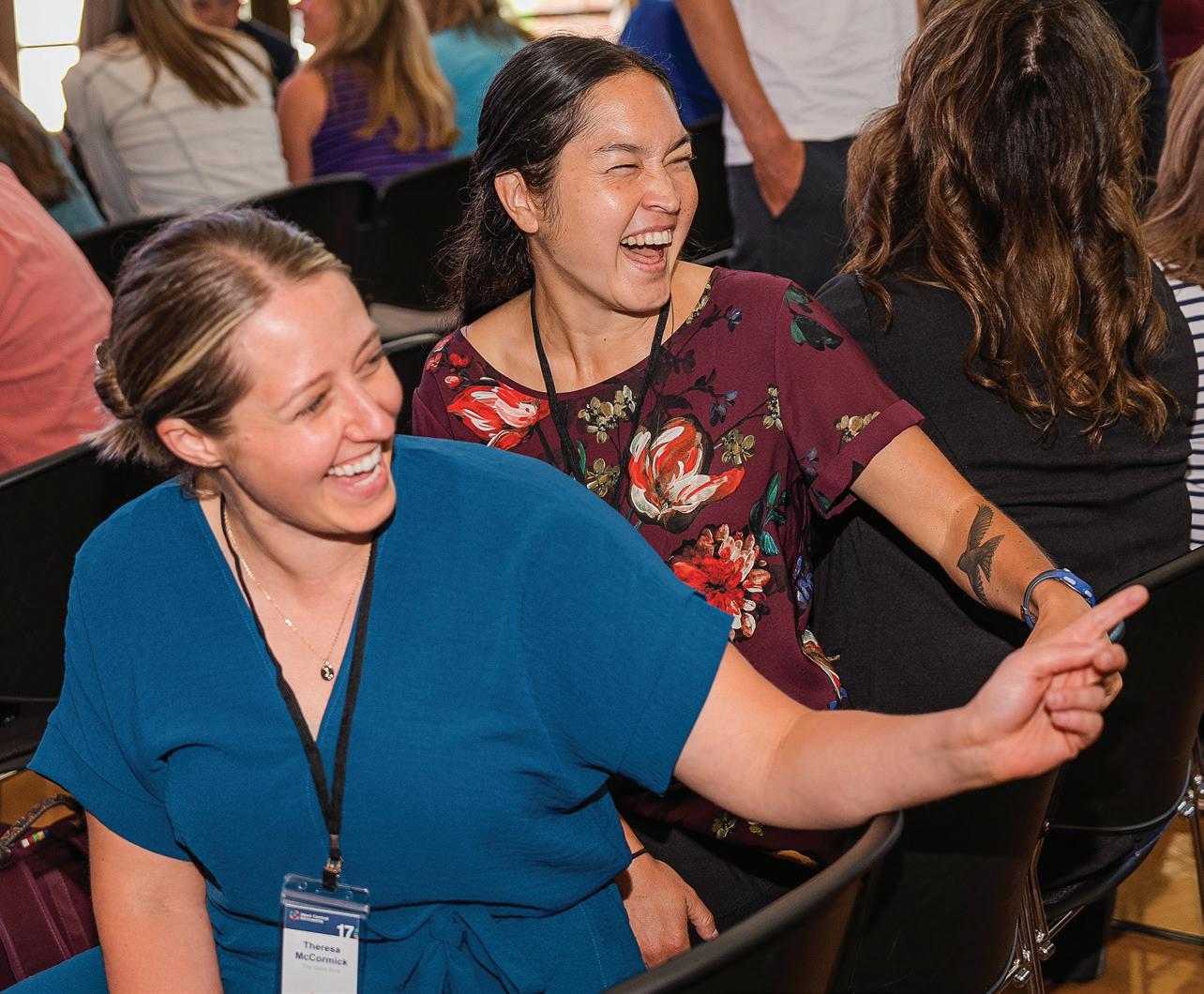

In this report, readers will explore the comprehensive action agendas developed by each of the 17 Rooms during the 17 Rooms - West Central Minnesota event. The report highlights the practical actions proposed by each Room and the key challenges and opportunities identified in their discussions. From poverty alleviation and food security to clean energy and community health, each Room has crafted tailored strategies to address regional issues and drive progress over the next 12 to 18 months.
Readers will find detailed action items such as holding stakeholder sessions to bridge poverty gaps, conducting food insecurity assessments, building inclusive community programs, and advocating for clean energy policies. Each Room’s agenda is a blend of innovative ideas and practical steps designed to address local challenges while contributing to global SDG targets.


After reviewing the action agendas and discussion notes, we identified seven key themes.
1. Community Engagement and Stakeholder Involvement: Many Rooms emphasized the importance of organizing stakeholder group sessions and involving community members in discussions to address various issues such as poverty, food insecurity, and community health. This theme highlights the need for collaborative efforts and diverse perspectives in problem-solving.
2. Education and Awareness: Several Rooms focused on enhancing education initiatives and raising awareness about specific challenges. This includes youth education to bridge knowledge gaps, educating leaders through poverty simulations, and increasing community awareness of recycling, composting, and sustainable practices.
3. Support Networks and Peer Assistance: The establishment and expansion of peer support networks were a key theme. These networks aim to provide continuous support and resources for individuals facing health and well-being challenges, fostering community bonds and resilience.
4. Infrastructure and Resource Assessment: Assessing and documenting existing resources and infrastructure needs were highlighted as crucial steps
in addressing issues such as food insecurity, housing, and waste management. Conducting comprehensive studies and inventories helps in identifying gaps and improving access to necessary resources.
5. Policy Advocacy and Implementation: Many Rooms stressed the importance of advocating for policies that support their goals. This includes promoting policies for clean energy expansion, gender equality, and education reforms. Engaging with policymakers and stakeholders to secure funding and support is essential for driving progress.
6. Innovation and Best Practices: Highlighting successful models from other communities and sharing best practices were common themes. This involves analyzing effective solutions and adapting them to local contexts, such as small grocery store models, housing solutions, and community programs.
7. Cultural and Behavioral Change: Promoting cultural and behavioral changes was emphasized in several Rooms. This includes campaigns to foster respect for water resources, encouraging healthy electronics use among parents and children, and using art and targeted communication strategies to make climate action more relatable and accessible.

Following the event, the next steps involve the continued convening of the 17 Rooms to further develop and implement their action agendas. Each Room will hold regular meetings to ensure ongoing collaboration and progress toward their specific SDG. These sessions will allow participants to refine their strategies, share updates, and address any emerging challenges. The ongoing engagement within these Rooms is crucial for maintaining momentum and ensuring that the proposed actions translate into tangible outcomes over the next 12 to 18 months.
We expect event partners to be instrumental in facilitating stakeholder connections, providing guidance and technical support, and assisting in identifying potential funding sources to help ensure the initiatives have the financial resources they need.
We invite you to join us in our efforts to make a meaningful impact in west central Minnesota by supporting the 17 Rooms initiative. Whether you can contribute your time, expertise, or financial resources, your involvement is crucial in helping achieve the SDGs. By participating in stakeholder sessions, offering technical assistance, or providing funding, you can help bridge gaps, enhance education, improve community health, and foster sustainable practices. Your support will make a significant difference, driving progress and creating a more resilient and thriving community for all.
To start the conversation about how you can help, visit wcif.org/contact.
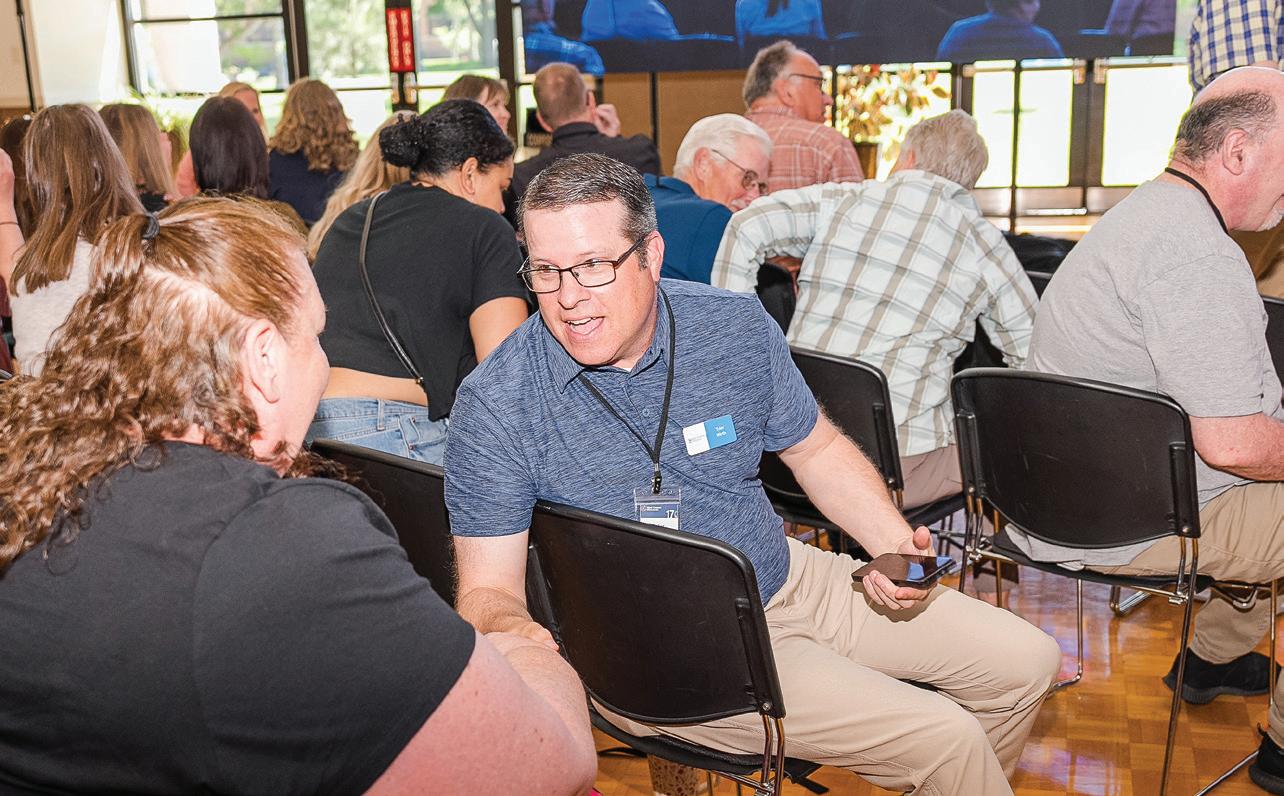
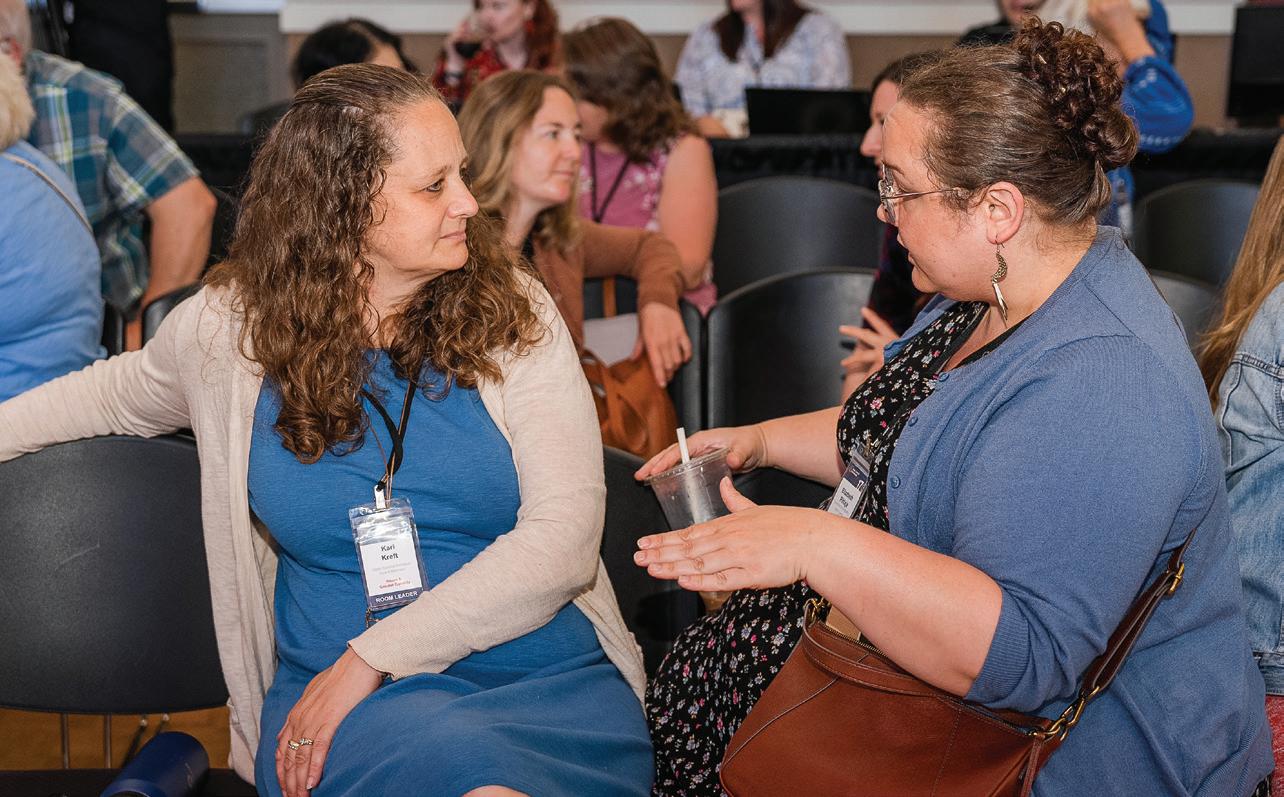
We extend our heartfelt gratitude to our event sponsors: Minnesota Farmers Union
Your generous support and commitment have been instrumental in making the 17 Rooms - West Central Minnesota event a resounding success. Your contributions have enabled us to bring together diverse stakeholders, facilitate meaningful discussions, and develop actionable strategies toward achieving the SDGs. Thank you for your unwavering dedication to fostering a brighter future for our communities.
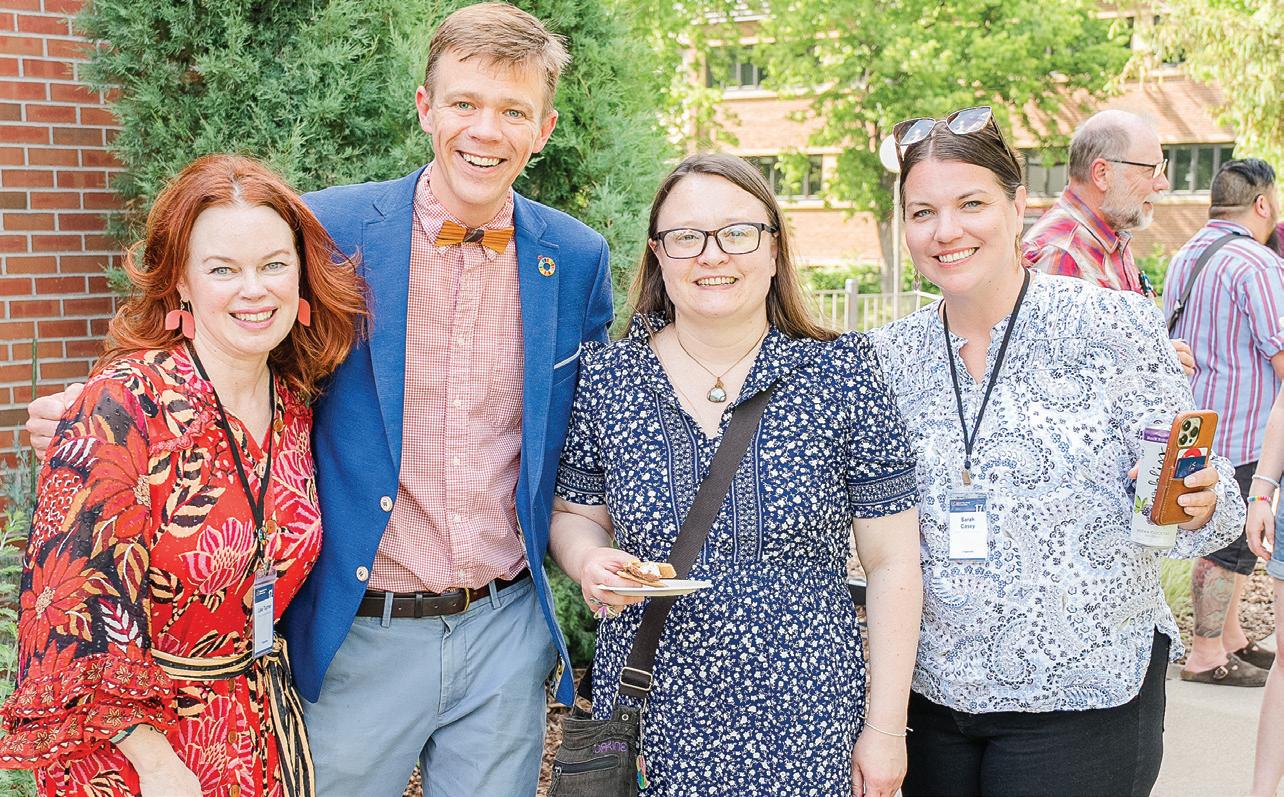
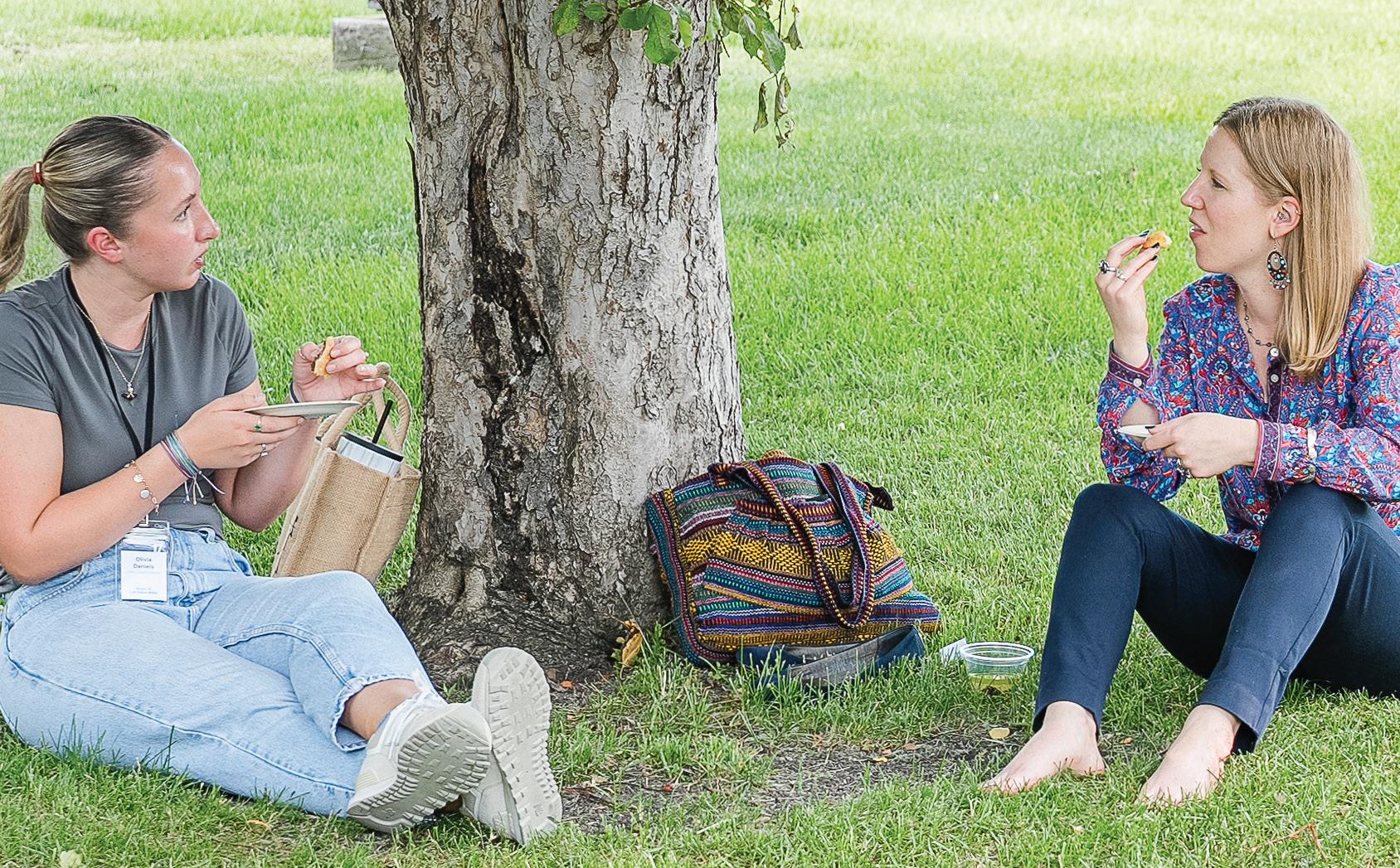
1. Hold stakeholder group sessions. Organize sessions with stakeholders to discuss and address the complexity of programs and find solutions to bridge the gap from poverty to self-sustainability.
2. Implement a poverty simulator for leaders. Develop and utilize a poverty simulation exercise for leaders to better understand the challenges faced by individuals in poverty, with the goal of informing and improving policy and program development.
1. Conduct a food insecurity assessment. Evaluate regional resources to identify gaps and improve access to food, focusing on foodassistance provider infrastructure needs such as transportation, education, and culturally appropriate food.
2. Document and share successful grocery models. Analyze and disseminate effective small grocery store practices to guide other operators, addressing infrastructure needs such as shelving and refrigeration.
1. Build healthy communities through inclusive programs. Develop and run community well-being programs that take a holistic approach, offering a variety of activities and building strong community connections.
2. Establish and expand support peer networks. Create and enhance peer support networks within communities to provide continuous support and resources for individuals facing health and well-being challenges. These networks aim to strengthen community bonds and provide necessary assistance.
3. Democratize data for funding leverage. Collect and utilize data at multiple levels to support funding applications and resource allocation. By democratizing data, the community can better leverage available funding and resources to enhance the health and well-being of its members.
1. Eliminate cell phone use during school hours. Collaborate with local schools to develop and implement policies that restrict cell phone use during the school day to improve focus and reduce distractions among older students.
2. Promote healthy electronics use among parents and young children. Provide presentations and supportive materials to parents, emphasizing the importance of minimizing electronics use around young children and encouraging more direct interaction and communication.
3. Expand general and early childhood education career pathways. Build and support programs that introduce high school students to general and early childhood education careers, expanding existing initiatives to attract more young people into the education field.
1. Conduct stakeholder mapping and environmental scan. Convene a group to identify and leverage existing relationships, resources, and networks, determining priorities for area women to address the identified challenges.
2. Develop safe third spaces for women. Create safe third spaces in communities for women to engage in intentional conversations and collective action.
3. Leverage existing resources for gender equality. Develop a toolkit for organizations and municipalities to ensure gender equity practices in their bylaws and operations.
1. Inventory waste collection systems. Conduct a thorough inventory of waste collection systems to reduce landfill seepage and prevent water contamination.
2. Educate on appropriate waste disposal. Develop educational programs for homeowners and businesses on the importance of proper waste disposal, including cost/benefit analyses to highlight risks such as groundwater contamination from improper disposal.
3. Build social capital for funding and mitigation. Foster collaboration among stakeholders such as legislators, city councils, Soil and Water Conservation Districts, and residents to secure grants and funding for necessary infrastructure improvements and mitigation efforts.
1. Improve energy efficiency in homes. Implement programs to assist homeowners with installing energy-efficient upgrades, such as insulation and energy-efficient appliances, to reduce energy consumption and costs.
2. Increase outreach for clean energy education. Develop and execute outreach programs to educate the community on the benefits of clean energy technologies and practices, promoting wider adoption.
3. Advocate for policies supporting clean energy expansion. Engage in advocacy efforts to support policies and funding for the expansion of clean energy infrastructure and initiatives, ensuring greater access and support for renewable energy projects.
1. Highlight successful models from other communities and businesses. Showcase effective solutions implemented in areas such as housing, child care, broadband, transportation, and workforce policy programs to provide actionable insights and inspiration.
2. Conduct a regional housing study and develop housing navigators. Undertake a comprehensive regional housing study to identify available resources and future needs. Establish housing navigators to guide community leaders through the options and services available based on demographics and projected requirements.
3. Launch a marketing campaign to promote key regional advantages. Develop and execute a marketing campaign that clearly communicates the key benefits and unique selling points of living and working in the region, based on gathered insights and community strengths.
1. Grant resources and experiential support for innovation incubators. Allocate grant resources and provide experiential support to establish incubators that assist independent entrepreneurs in realizing their ideas, particularly in the areas of housing and sustainable building materials.
2. Increase funding for rural transit drivers. Secure additional funding to enhance rural public transit services, focusing on improving driver availability and reliability. Explore leveraging school bus drivers for community needs, such as medication and grocery deliveries, during off-hours.
3. Educate and engage with the business sector for sustainable practices. Develop educational programs and engage with the business sector to implement sustainable energy and industrialization practices. Promote awareness of resources and incentives for adopting renewable energy and improving industrial efficiency.
1. Identify and create inclusive third spaces. Continue to identify and establish low or no-cost third spaces to facilitate inclusivity in community visioning and decision-making processes.
2. Increase diversity in leadership. Develop training programs for philanthropy and community leadership to ensure more diverse representation and opinions in decision-making roles.
3. Promote awareness of inequities. Implement educational campaigns to raise awareness about various forms of inequities and ensure that marginalized voices are heard and included in planning and decision-making processes.
1. Promote innovative housing solutions through storytelling. Share success stories and examples of innovative housing solutions from other communities to change public opinion, inspire future housing development, and overcome fear of new housing ideas.
2. Develop a community-specific housing template. Create adaptable templates for housing solutions that can be customized to fit the unique needs and zoning regulations of different communities.
3. Establish a consistent resource base. Collaborate with organizations to establish a consistent resource base for community leaders and housing experts, providing regular updates and accessible information on sustainable and affordable housing practices and policies.
1. Enhance understanding of recycling and composting opportunities. Develop educational programs to increase community awareness of existing recycling and composting opportunities and their benefits.
2. Promote community-wide reduction and reuse initiatives. Implement and scale up initiatives, such as buy-nothing clubs, to encourage community participation in reducing waste through reusing and repurposing materials.
3. Collaborate with regional solid-waste service providers. Partner to increase processing capacity, with a focus on composting options for businesses.
1. Facilitate climate conversations across diverse groups. Create spaces for healthy discussions between individuals with differing views on climate action to foster understanding and cooperation.
2. Promote and implement the Solar for Schools program. Engage with school administrators and community members to advocate for the Solar for Schools program, emphasizing its educational and environmental benefits.
3. Utilize art and targeted communication strategies. Develop and use art and targeted messaging to effectively communicate the importance of climate action and the Sustainable Development Goals (SDGs) to a wider audience, making the concepts more accessible and relatable.
1. Launch a “respect water” cultural campaign. Develop and implement an educational and awareness campaign focused on fostering respect for water resources within the community.
2. Initiate an “adopt a river” pilot project. Organize and conduct a river cleanup project where volunteers adopt and clean a local section of the river, using the collected trash to create art and raise awareness about pollution.
3. Foster partnerships with local organizations. Build connections and collaborate with local and state governmental agencies, nonprofits, and community organizations to enhance efforts in protecting and preserving water resources.
1. Enhance communications and support for local media. Provide communications training and support for small-town newspapers to spread positive stories about climate and conservation efforts through letter writing and social media.
2. Promote and support manageable conservation programs. Advocate for and back programs, such as Lawns to Legumes and Soil Health Financial Assistance Program Grants, that offer tangible benefits and risk reduction strategies.
3. Foster outdoor education. Increase outdoor education initiatives to create lifelong conservationists by engaging children and promoting an appreciation for the natural world.
1. Promote solutions journalism and diverse voices. Encourage media outlets to focus on solutions-oriented journalism and create platforms that amplify diverse voices to rebuild trust in journalism and foster community engagement.
2. Organize screen-free community events. To encourage face-to-face interactions, reduce intimidation, and build a sense of connectedness among participants, host community events that are free of screens.
3. Implement task-oriented community projects. Develop and promote task-oriented events and projects that focus on collective problemsolving and collaboration, making participation less intimidating and more action-driven.
1. Enhance interpersonal communication skills. Develop training and workshops to improve interpersonal communication skills among community members, fostering better understanding and collaboration while bolstering diverse perspectives.
2. Promote relationship building and critical thinking. Work with communities to hold forums and listening sessions to better connect residents with their city staff and council members.
3. Foster knowledge sharing and synergies. Encourage knowledge sharing across communities and organizations, creating a network for collaboration and the advancement of shared goals.

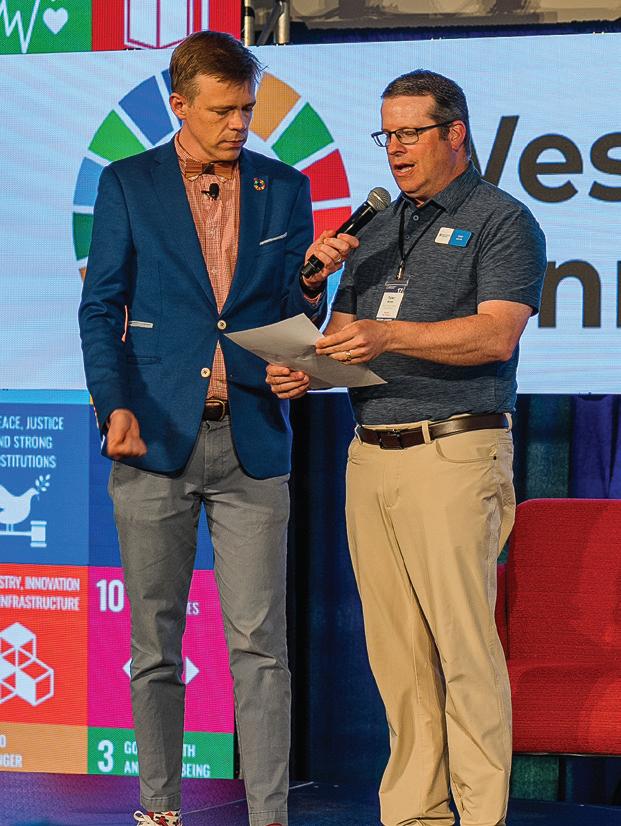
In Room 1’s action agenda discussion, participants identified several significant challenges that need to be addressed to achieve their goal of alleviating poverty. The primary challenges highlighted were the complexity of existing programs, the difficulty of bridging the gap from poverty to self-sustainability, and the need for improved education, particularly among the youth. These issues were seen as critical barriers to making meaningful progress toward their objectives.
To tackle these challenges, the Room proposed three practical actions to be implemented over the next 12 to 18 months. First, they suggested holding stakeholder group sessions to facilitate dialogue and collaboration among various parties involved in poverty alleviation efforts. These sessions aim to simplify program complexities and devise effective strategies to support individuals transitioning out of poverty. Secondly, the group recommended the use of a poverty simulator for leaders. This tool would provide a simulated experience of living in poverty, helping leaders gain a deeper understanding of the challenges faced by those in need and informing better decision-making and policy development.
The discussion also underscored the importance of involving government program leaders, education leaders, and community program leaders in these initiatives. Adequate resources, such as funding for survey programs and the implementation of stakeholder groups and simulators, were deemed necessary to achieve these actions. Insights from the cross-Room exchange further emphasized the value of bringing diverse perspectives into the conversation, with some participants sharing vulnerable and impactful experiences. These insights were considered crucial in shaping a more inclusive and effective approach to addressing poverty and fostering self-sustainability.
ZERO HUNGER

Room 2’s discussion focused on addressing the significant challenges related to food insecurity in their region. Participants highlighted issues such as infrastructure needs, including transportation and education, and the high cost of culturally appropriate foods. They noted that many individuals struggle to access food resources due to a lack of reliable transportation and the geographic limitations of current programs. The conversation also touched on the problem of food deserts and the inefficiencies within the existing food distribution systems, which often result in people visiting multiple food shelves without adequate access to nutritious food.
To tackle these challenges, the group proposed several practical actions. One key action is to conduct a comprehensive landscape assessment to identify gaps in the current food system and develop strategies to improve access to resources. This includes documenting successful models of small grocery stores and food distribution practices that can be replicated by other small operators. By understanding the specific infrastructure needs, such as shelving and refrigeration, and identifying available resources and grants, the team aims to create a more efficient and supportive food distribution network.
Additionally, the group emphasized the importance of connecting high-risk individuals to necessary resources. They discussed leveraging the knowledge and expertise of group members to develop effective strategies for linking individuals with food resources. This involves finding platforms to aggregate and distribute information, ensuring that people are aware of the available support. The discussion also underscored the need for collaboration with organizations that have the right motives and the importance of continuing successful programs like the LEAF initiative. Through these actions, the team hopes to create a more sustainable and accessible food system for their communities.
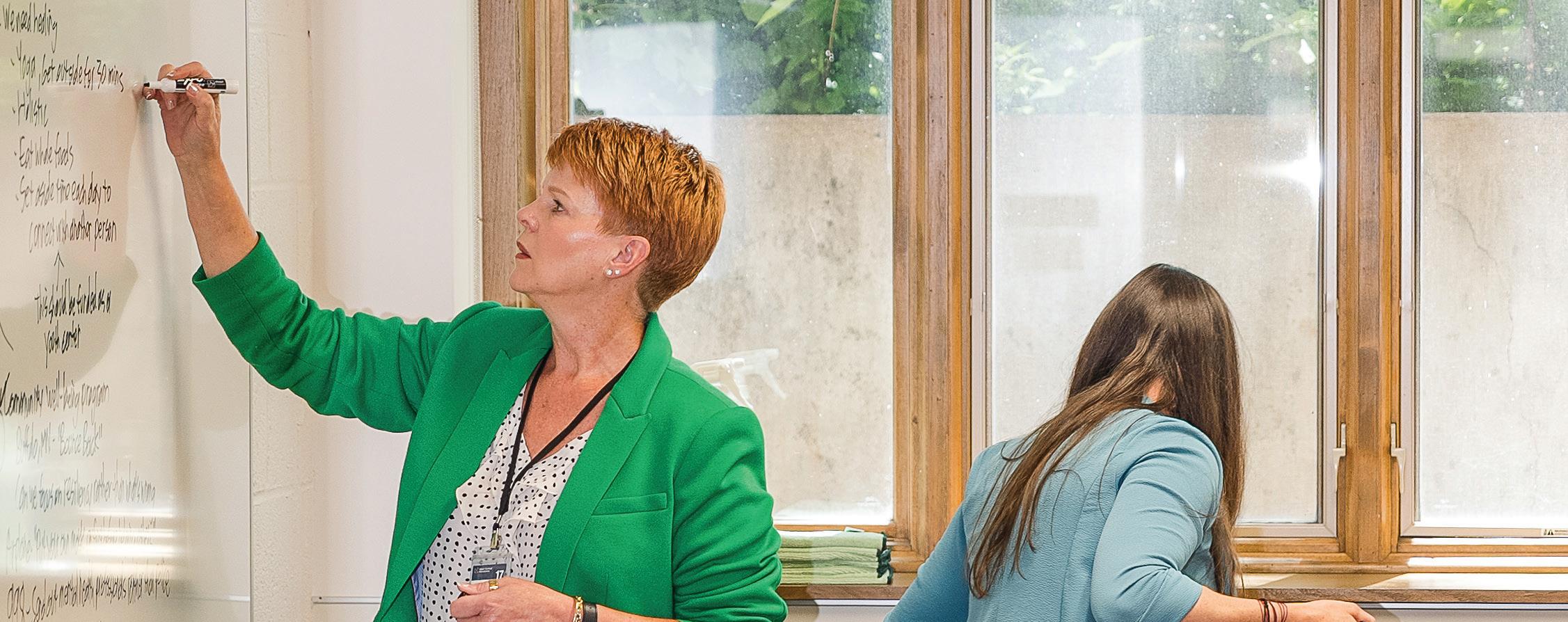

Room 3’s discussion centered around developing strategies to enhance community health and well-being through inclusive and comprehensive approaches. Participants identified several key challenges, including homelessness, addiction, and recovery, which need to be addressed to build healthier communities. They emphasized the importance of creating community well-being programs that adopt a holistic approach, integrating various activities and fostering connections among community members. These programs aim to provide support across multiple dimensions of health and wellbeing, ensuring that all community members have access to the resources they need.
A significant part of the discussion focused on establishing and expanding peer support networks within the communities. Participants highlighted the value of these networks in providing continuous support and resources to individuals facing health challenges. By strengthening these peer networks, communities can ensure that individuals have access to ongoing assistance and a support system that fosters resilience and recovery. The group underscored the importance of these networks in building strong community bonds and providing a foundation for sustainable health and wellbeing initiatives.
In addition to program development and peer support networks, the group discussed the need to democratize data to leverage funding and resources effectively. Participants emphasized the importance of collecting and utilizing data at multiple levels to support grant applications and resource allocation. By making data more accessible and actionable, the community can better identify needs, track progress, and secure the necessary funding to support health and well-being programs. This approach aims to enhance the overall effectiveness of community initiatives and ensure that resources are allocated where they are most needed.


Room 4’s discussion on Quality Education emphasized the need for a clear, agreedupon definition of quality in education. Participants observed that many new teachers enter the workforce without a solid understanding of the curriculum or educational standards. They also highlighted the complexity and tight funding of the early childhood education system. The overall lack of funding and incentives in education, particularly in early childhood, is contributing to a shortage of options and resources.
Participants noted that many schools struggle with students using cell phones, which disrupts their learning and impacts their mental health. They suggested working with local schools to develop policies that restrict cell phone use, thereby improving students’ focus and engagement. Additionally, the group emphasized the need to educate parents about the detrimental effects of excessive electronics use on young children. By providing presentations and supportive materials, they aim to encourage parents to minimize their own electronics use and interact more directly with their children.
Another key action discussed was expanding early childhood education career pathways. The group highlighted the importance of attracting more young people to the education field, especially in early childhood education. They pointed out existing programs that allow high school students to earn credits in early childhood education and suggested expanding these initiatives to reach a broader audience. By building and supporting these programs, they hope to foster a greater interest in education careers and address the current shortage of educators. The discussion also included potential collaborations with universities and other stakeholders to elevate the status of the education profession and ensure sustained support for these initiatives.
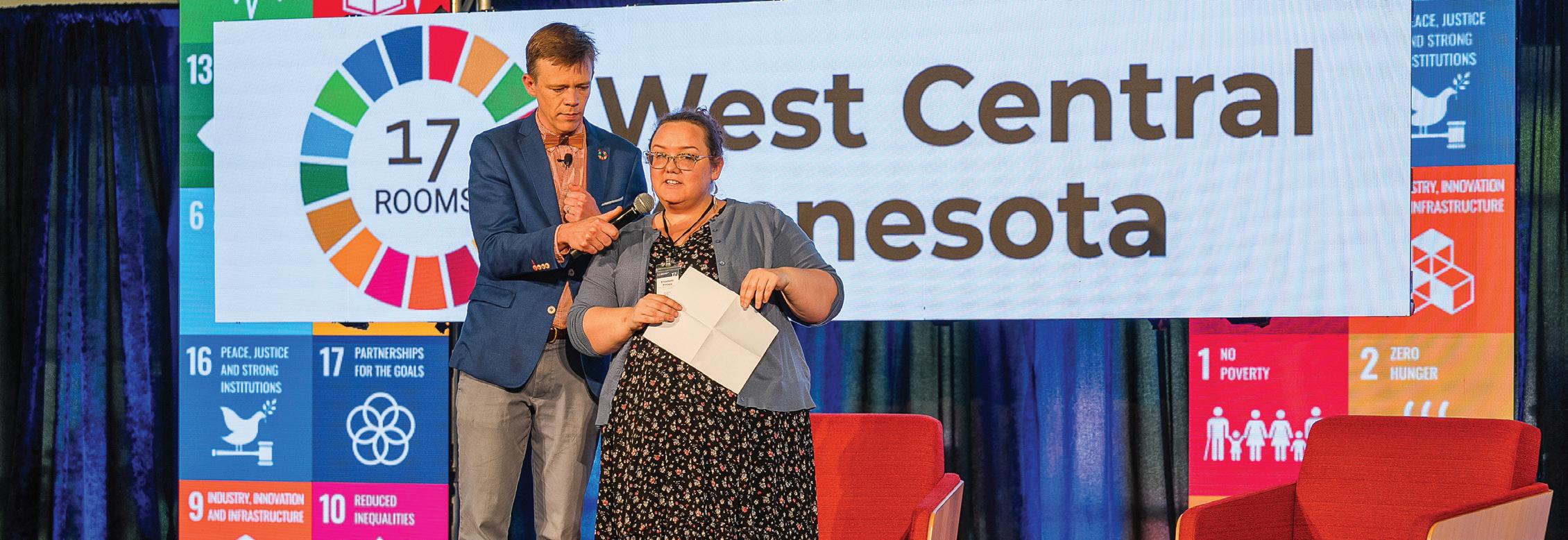
Room 5’s discussion on Gender Equality identified several significant challenges and practical actions to address these issues over the next 12-18 months. Participants emphasized the need for safe third spaces where women can engage in intentional conversations and collective action outside of work or home. They also highlighted the importance of leveraging and promoting existing leadership development and training opportunities for women, including political campaigns. Patriarchal attitudes and power imbalances were noted as pervasive barriers that undermine women’s progress in various fields.
To tackle these challenges, the group proposed conducting a stakeholder mapping and environmental scan to identify and leverage existing relationships, networks, and resources. This process aims to determine the priorities for women in the area and build a foundation for future actions. One key initiative discussed was the development of safe third spaces in each community, where women can gather to discuss and work on community issues collectively. These spaces would be supported by regular regional calls and the potential for an annual summit to ensure continuous engagement and support.
Additionally, the group emphasized the importance of integrating Sustainable Development Goal (SDG) 5 priorities into existing resources. They suggested developing a toolkit for organizations and municipalities to ensure that their bylaws and operations reflect gender equity practices. By focusing on storytelling and communications strategies, the group aims to promote women’s leadership and address the systemic barriers that hinder gender equality.
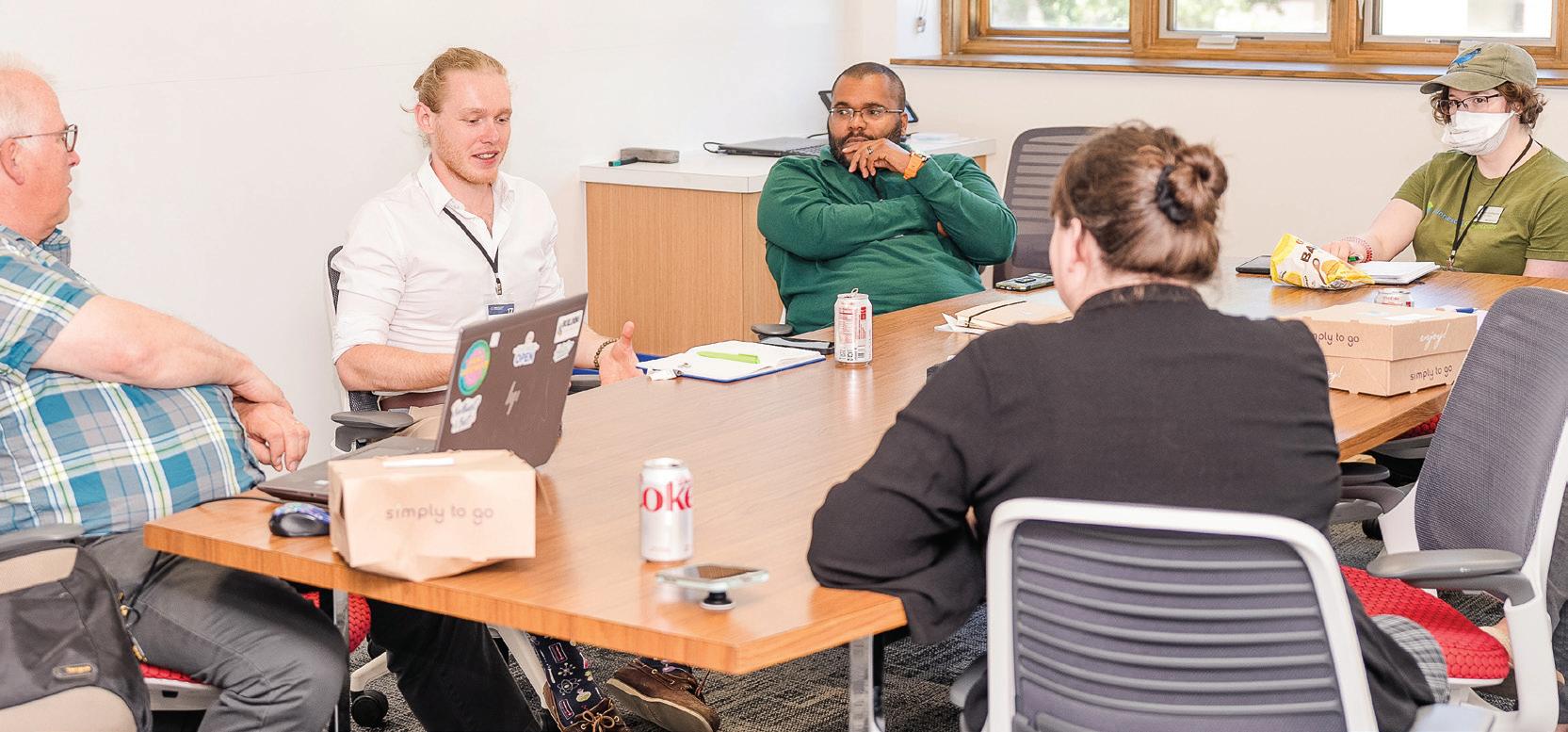

Room 6’s discussion centered on environmental challenges related to water and waste management in rural areas. Key issues included leaching landfills contaminating groundwater, old infrastructure such as lead pipes, and surface water pollution from agricultural runoff. The group noted the lack of studies in rural areas and the complexity added by evolving regulations.
To tackle these challenges, the group emphasized securing funding and grants for infrastructure upgrades, advocating to ensure legislators understand and support these needs. They proposed a comprehensive inventory of current recycling programs and an assessment of city codes to better manage water resources and pollution. Building social capital between stakeholders such as legislators, city councils, Soil and Water Conservation Districts, and regional residents was deemed crucial for securing necessary funding and implementing effective mitigation.
Education was another focus, with an emphasis on homeowner and business education on waste management. They suggested developing programs to improve understanding of waste streams, recycling, and composting, and promoting single-sort recycling systems and rain barrels. The importance of educating on the impacts of improper waste disposal, such as the contamination risks of fluorescent bulbs, was highlighted. By enhancing public awareness, the group aims to foster sustainable environmental management in rural communities.
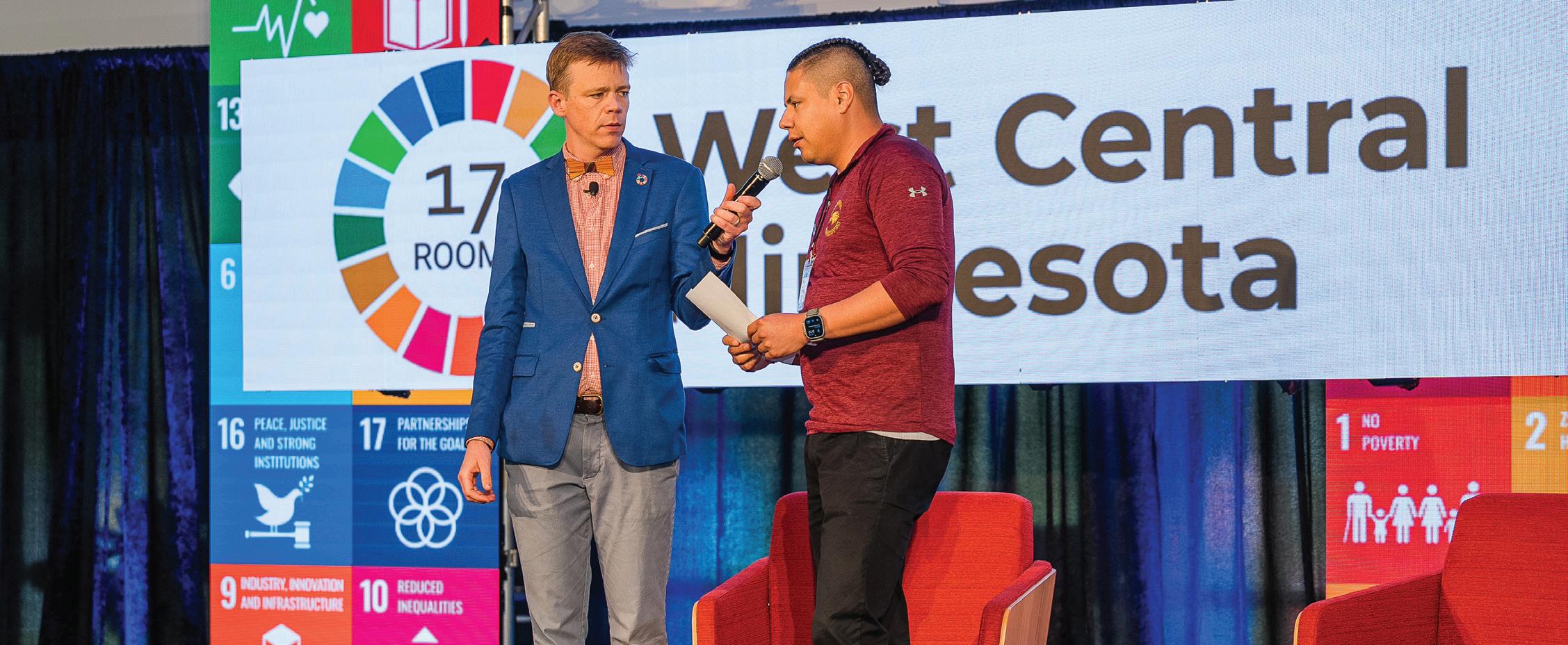
Room 7’s discussion focused on addressing key challenges related to clean energy and energy efficiency. Participants highlighted the need to improve energy efficiency in homes as a critical step towards reducing energy consumption and costs. They discussed the importance of implementing programs that assist homeowners with installing energy-efficient upgrades, such as better insulation and energy-efficient appliances. This approach aims to make homes more sustainable and reduce the overall environmental impact of energy use.
In addition to improving energy efficiency, the group emphasized the importance of increasing outreach and education about clean energy technologies. They proposed developing and executing community outreach programs to educate residents on the benefits of adopting clean energy practices. By raising awareness and understanding, the group hopes to encourage more widespread adoption of renewable energy sources and technologies, ultimately contributing to a more sustainable and energy-efficient community.
The discussion also underscored the need for strong advocacy efforts to support policies that promote clean energy expansion. Participants recognized the importance of engaging with policymakers and stakeholders to advocate for funding and policies that facilitate the growth of clean energy infrastructure. By building support for renewable energy projects and ensuring greater access to clean energy solutions, the group aims to drive significant progress towards their clean energy goals over the next 12 to 18 months.
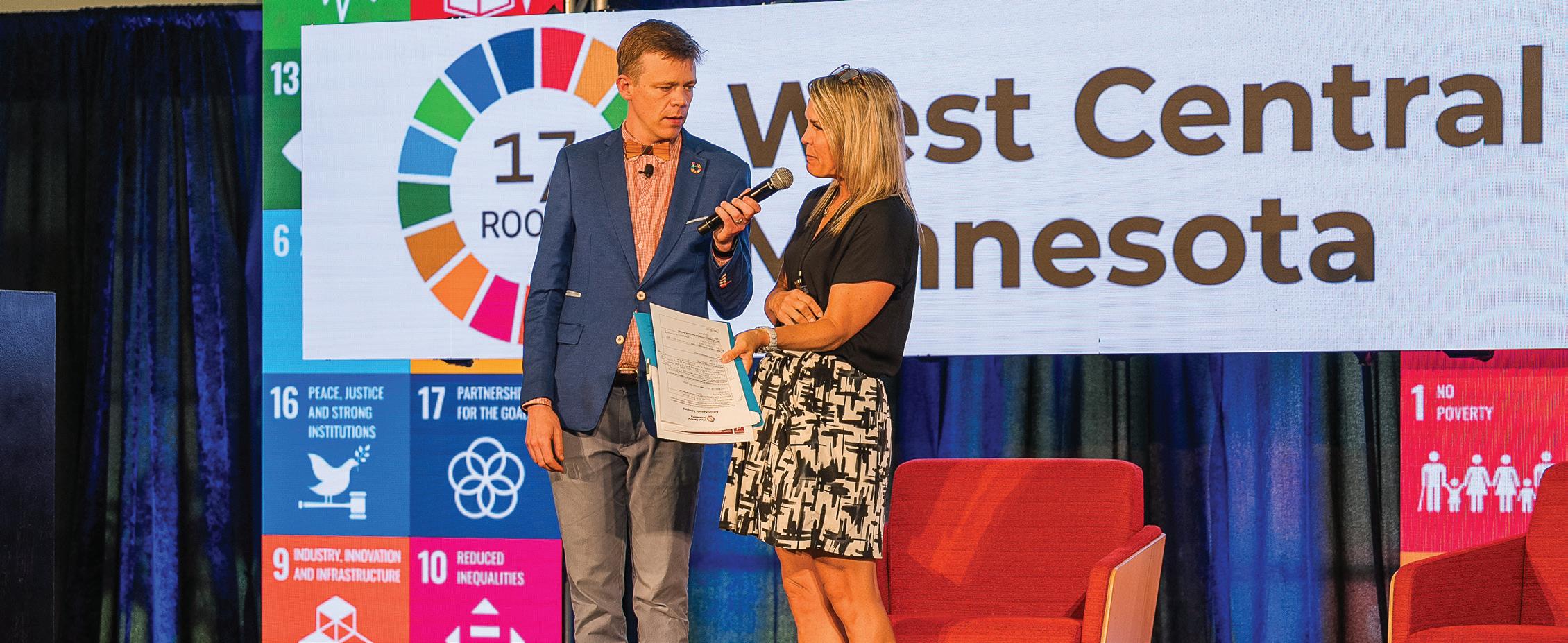
Room 8’s discussion focused on addressing the multifaceted challenges related to housing, community resources, and regional marketing. Participants emphasized the importance of learning from successful models implemented in other communities and businesses, particularly in areas such as housing, child care, broadband, transportation, and workforce development programs. By showcasing these effective solutions, the group aims to provide actionable insights that can be adapted to their region to tackle similar issues.
One of the key action items discussed was conducting a comprehensive regional housing study. This study aims to map out existing resources, identify future needs, and provide detailed information about the age and demographics of the population. Additionally, establishing housing navigators was suggested to guide residents through available housing options and resources, ensuring that both current and future housing needs are met efficiently.
The group also highlighted the necessity of a robust marketing campaign to attract and retain residents and businesses in the region. By gathering and promoting key points that emphasize the advantages of living and working in the area, the marketing campaign aims to enhance the region’s appeal. This effort involves creating a cohesive message that showcases the community’s strengths, including its resources, opportunities, and quality of life, to foster a stronger sense of place and community pride.
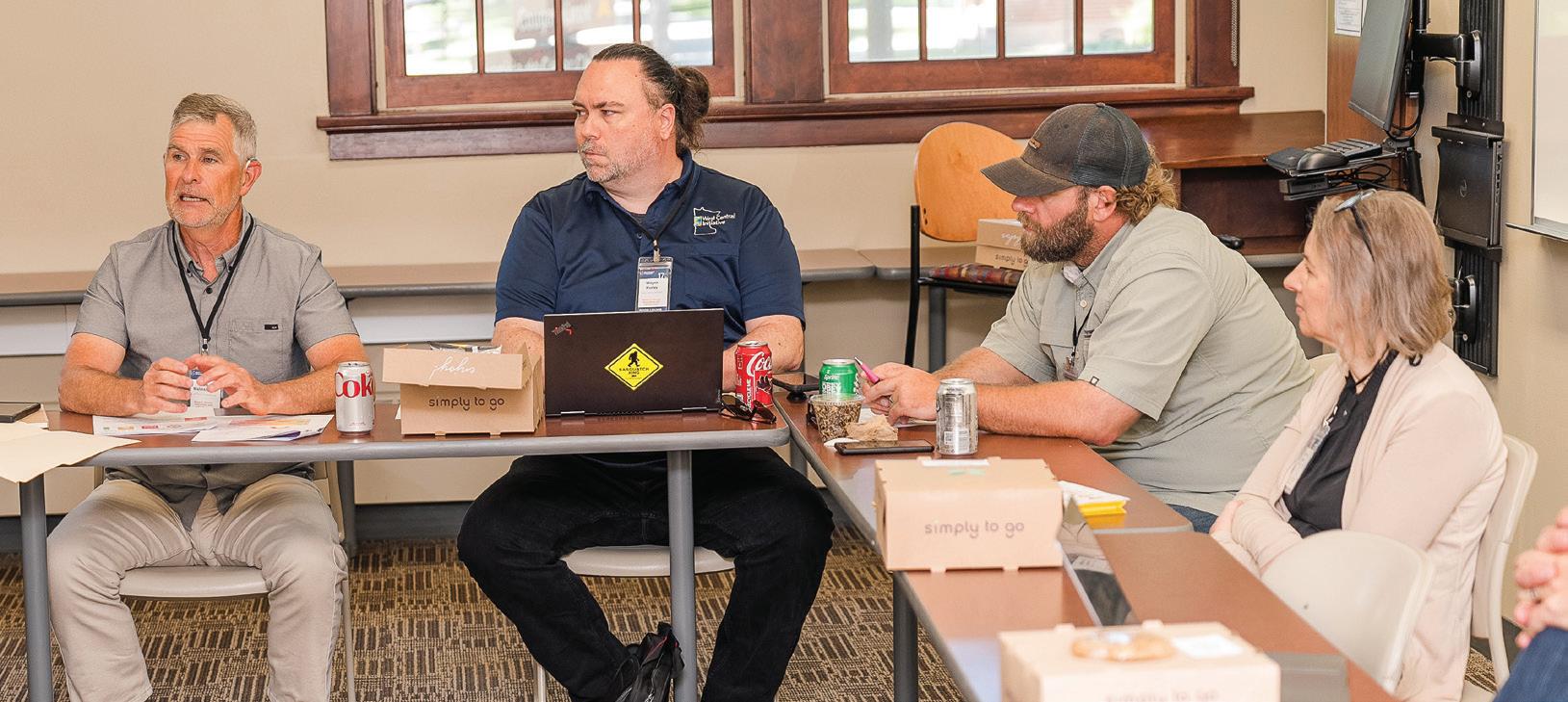
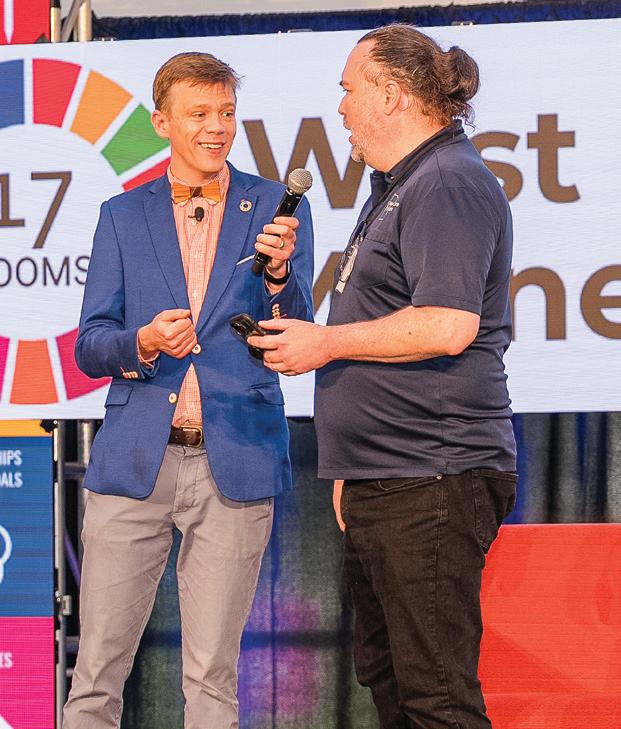
Room 9’s discussion centered on the challenges and opportunities related to industry, infrastructure, and innovation, particularly in the context of renewable energy and sustainable practices. Participants highlighted the need for manufacturing facilities in rural areas to access renewable energy and discussed the economic hurdles that make this transition difficult. They noted that awareness of micro-grid options and other renewable solutions is still limited among business leaders. The group also emphasized the importance of creating economic incentives to encourage the adoption of renewables and improve energy efficiency.
Innovation was another critical theme, with participants exploring ways to support entrepreneurs and new ideas in the region. They discussed the potential of 3D-printed housing as a solution to the high costs of building affordable housing. The group recognized the need for incubator programs and mentorship to help innovators access resources and bring their ideas to fruition. The discussion also touched on the importance of renovating existing buildings to be more sustainable, reducing waste, and incorporating new technologies like photovoltaic cells in construction.
Transportation and infrastructure issues were also prominent in the conversation. Participants identified the need for better rural transit options and the challenges of individual transportation, particularly for older residents. They suggested increasing funding for rural transit drivers and exploring the use of school bus drivers for additional community services. The group stressed the importance of public engagement and education to promote the use of active transportation and the benefits of sustainable infrastructure. By addressing these interconnected issues, Room 9 aimed to develop practical actions that would foster sustainable development and innovation in their communities.
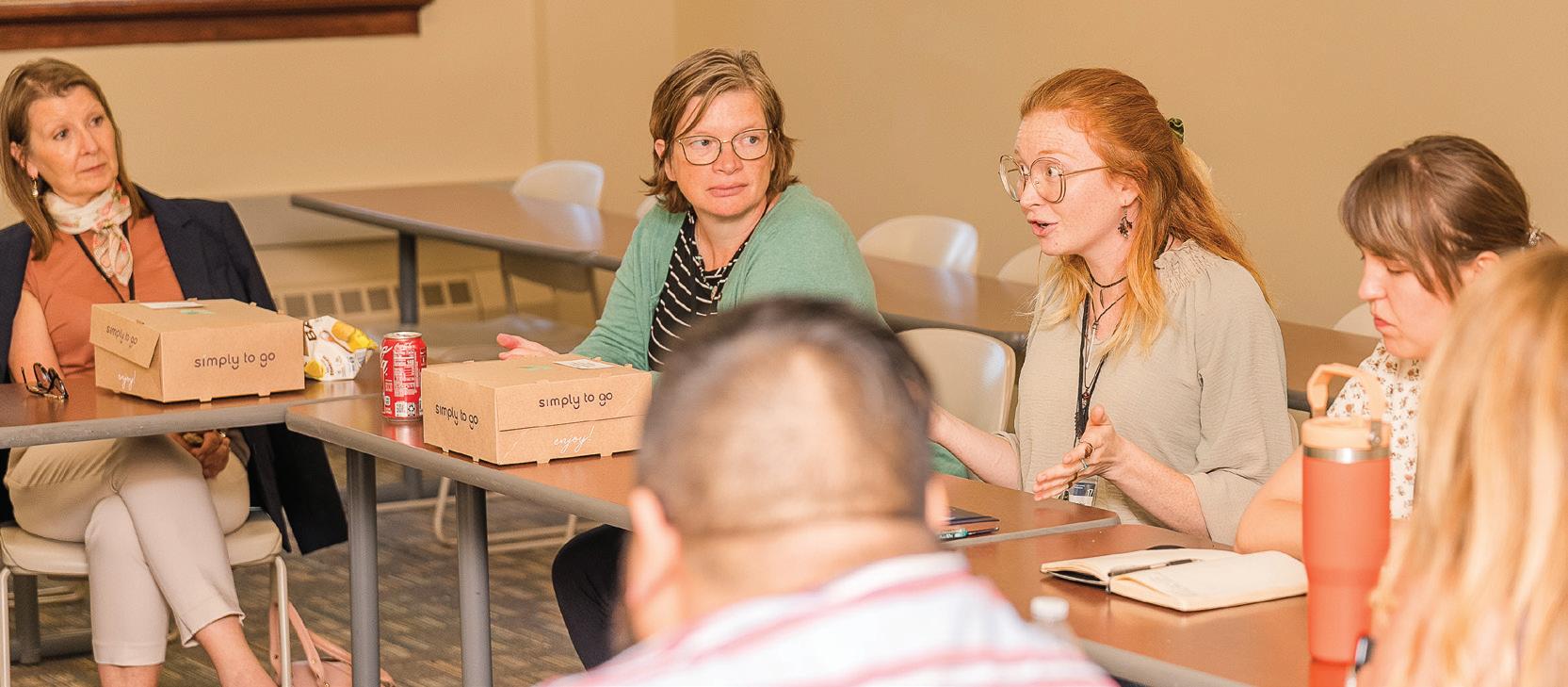
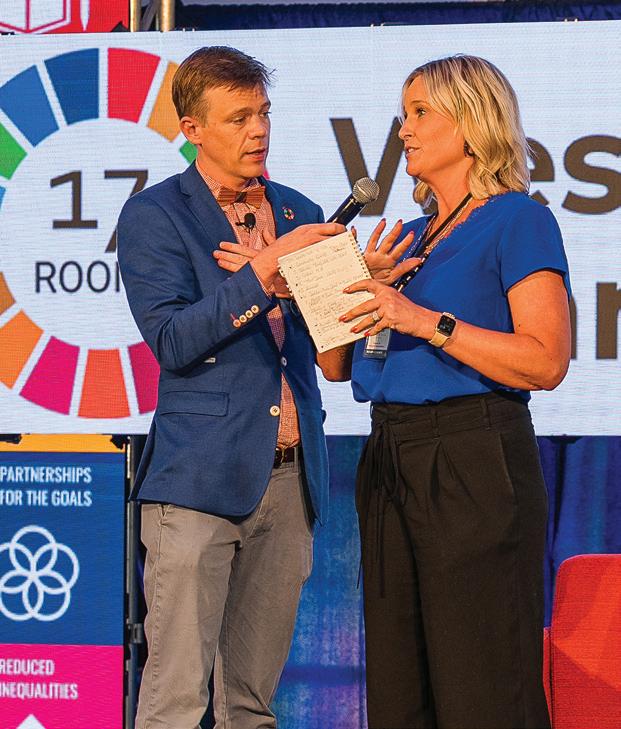
Room 10’s discussion focused on equity and inclusion within the community. Participants emphasized the challenge of making inequities understandable for those who haven’t experienced them. They highlighted the need for more resources and awareness to confront these issues, noting that current efforts are often hindered by a lack of funding and inclusive community spaces. To address these challenges, the group prioritized creating inclusive community spaces and ensuring historically excluded voices are included in community visioning and decision-making processes.
One key initiative identified by the group is creating and maintaining inclusive third spaces at low or no cost. Third spaces, defined as neutral places separate from home and work, can serve as hubs for community visioning and decision-making. Examples of third spaces in rural areas include community centers, libraries, parks, and cafes that offer free meeting spaces. Sustaining these spaces will require collaboration with local businesses, nonprofits, and government agencies for ongoing support and funding.
Additionally, the group stressed the importance of increasing diversity in leadership by developing training programs for philanthropy and community leaders to ensure a wider range of perspectives. They also discussed the need for educational campaigns to raise awareness about inequities and include marginalized voices in planning processes. By creating inclusive spaces, promoting diverse leadership, and raising awareness about inequities, the group aims to foster a more inclusive environment where all community members can participate fully and equally in decisionmaking processes.
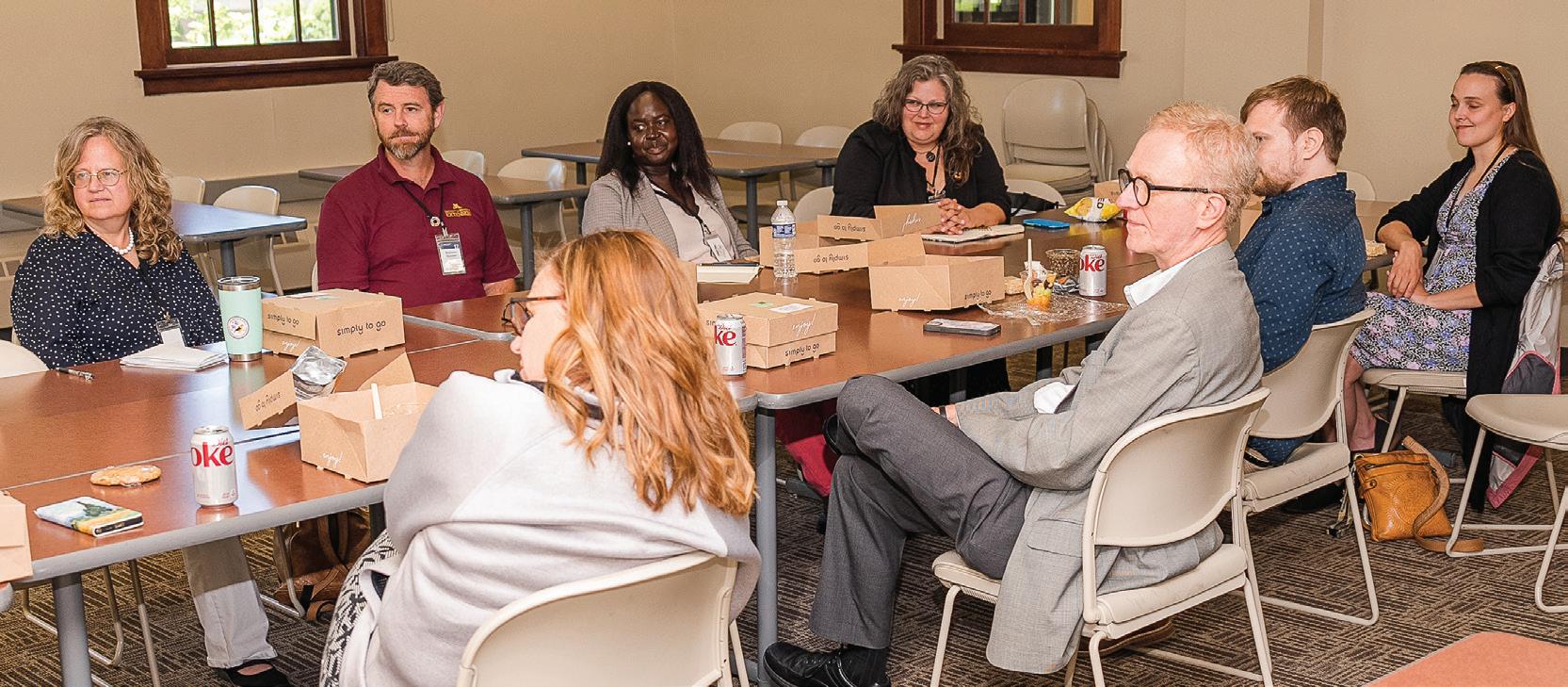

Room 11’s discussion focused on the challenges and opportunities related to housing and community development, particularly in overcoming restrictive zoning policies and changing public perceptions. Participants noted that zoning regulations often hinder the development of diverse and affordable housing options. They highlighted the need to shift public opinion to be more open to innovative housing solutions, as fear of the unknown and resistance to change are major barriers that need to be addressed through effective communication and education.
To tackle these challenges, the group emphasized the importance of storytelling and sharing successful examples from other communities. By showcasing what has worked elsewhere, they aim to illustrate the benefits and feasibility of different housing models, such as tiny homes and 3D-printed houses. Additionally, they discussed creating adaptable housing templates that can be tailored to fit specific needs and zoning requirements. This approach would provide a practical framework for implementing new housing solutions while ensuring they meet local regulations.
The group also stressed the need for establishing a consistent resource base to support community leaders and housing experts. This resource base would provide up-to-date information on sustainable housing practices and policies and use storytelling to share examples in a more approachable way. This will help to coordinate efforts across different regions. Regular updates and accessible information are crucial for maintaining momentum and ensuring that communities have the tools and knowledge necessary to implement innovative housing solutions effectively. By addressing these key areas, Room 11 aims to foster more inclusive and adaptable housing developments that meet the evolving needs of their communities.
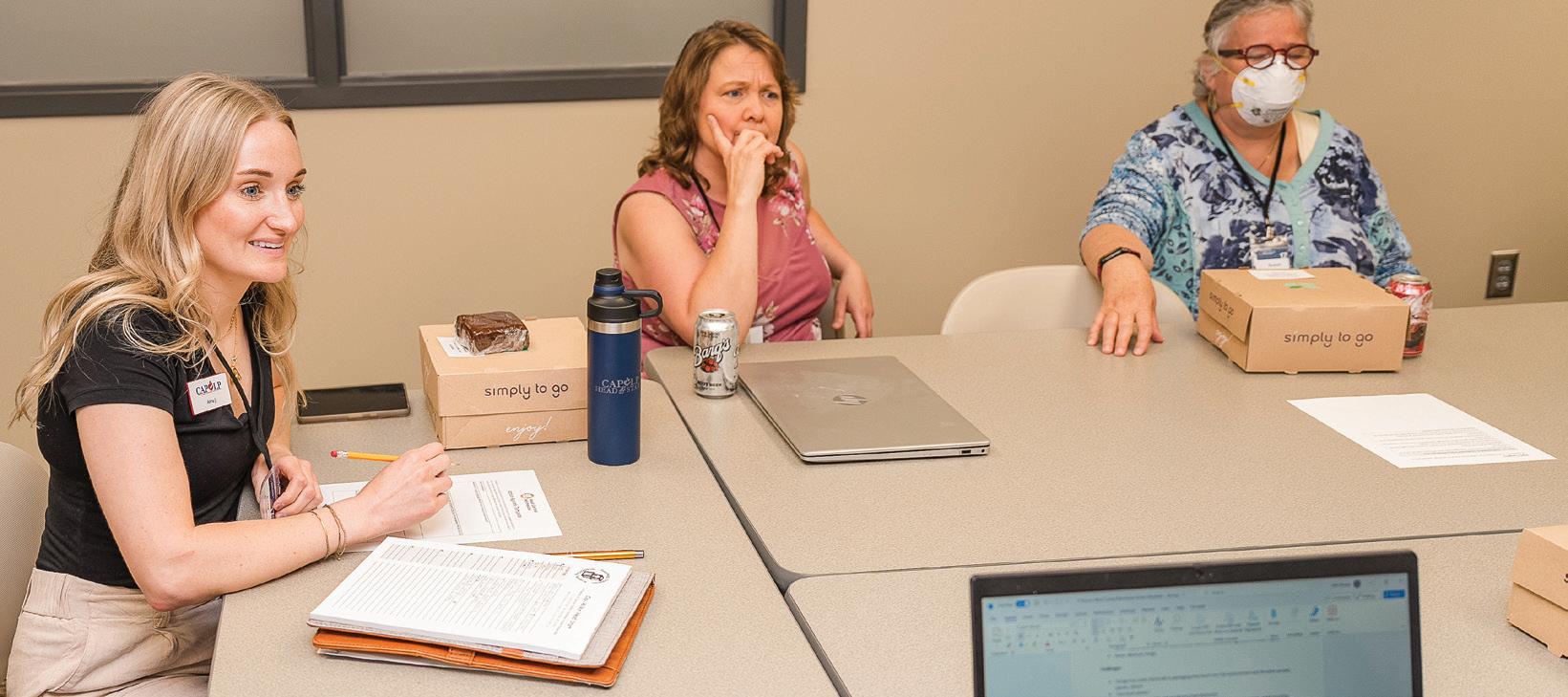

Room 12’s discussion centered around the challenges and strategies for enhancing recycling, composting, and waste reduction efforts within the community. Participants identified three main challenges: determining who is responsible for waste reduction and reuse, scaling up current initiatives, and creating incentives for recycling and composting for both the producer and consumer. These issues highlight the need for clear roles, broader implementation of successful programs, and motivating the community to participate in sustainable practices.
To address these challenges, the group emphasized the importance of increasing understanding and awareness of recycling and composting opportunities. They proposed developing educational programs to inform the community about existing initiatives and their benefits. By educating residents and business owners, the group aims to foster greater participation and support for waste reduction efforts. Additionally, they discussed promoting community-wide initiatives like buy-nothing clubs, which encourage the reuse and repurposing of materials, thereby reducing overall waste.
The group also recognized the necessity of creating incentive programs to encourage active participation in recycling and waste reduction, both downstream and upstream. These programs would reward businesses and individuals for their efforts, focusing on efficiency and cost-effectiveness. By providing tangible benefits for sustainable practices, the group hopes to drive broader adoption of recycling and composting activities. Overall, Room 12’s discussion highlighted the need for education, community engagement, and incentives to effectively tackle waste management challenges and promote a more sustainable future.
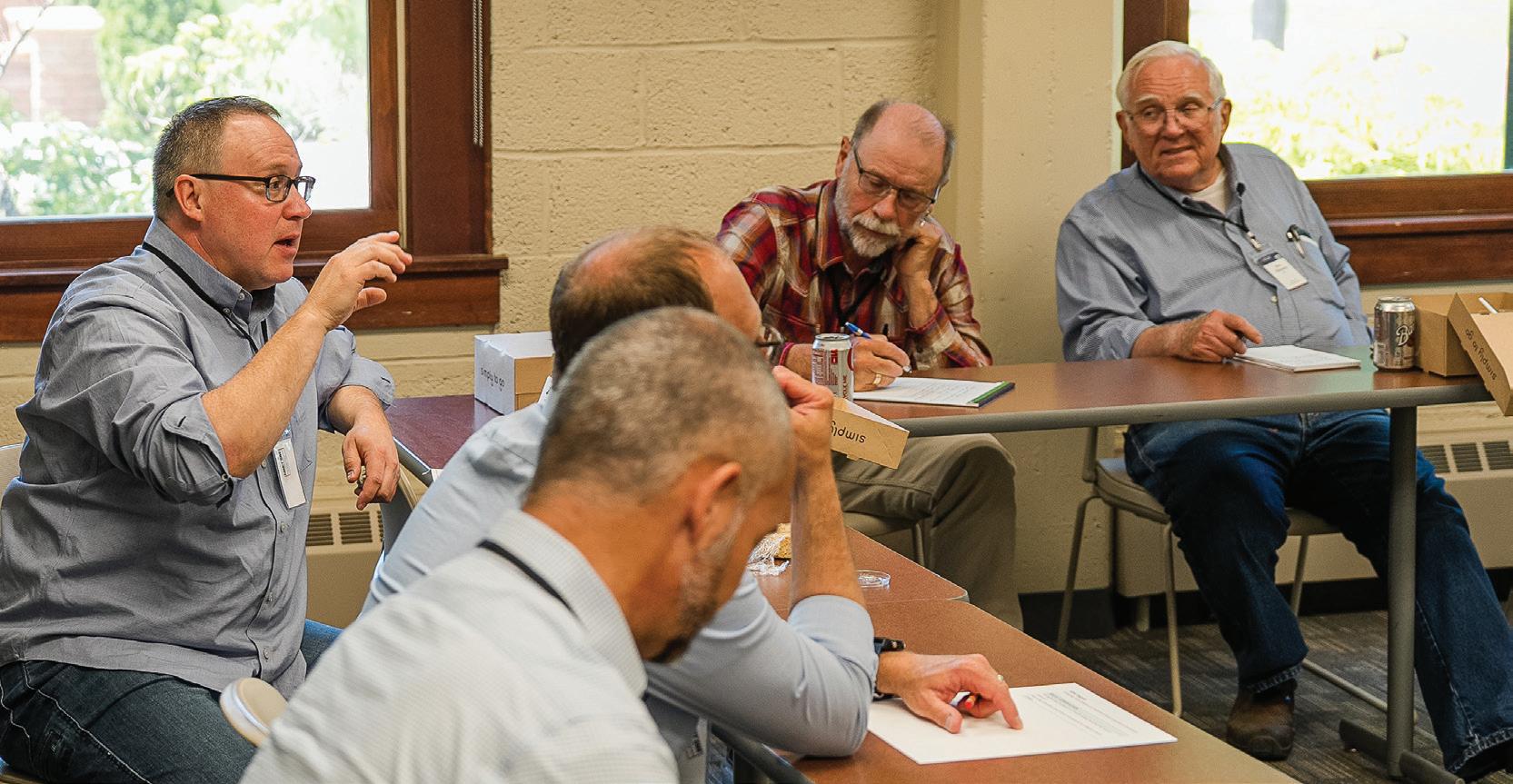
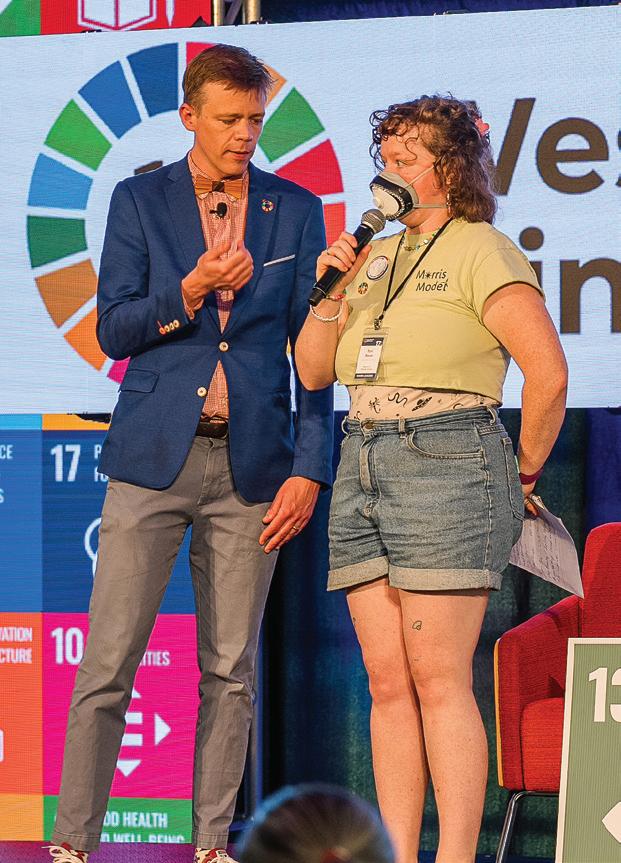
Room 13’s discussion on Climate Action highlighted the significant barriers and opportunities in addressing climate change locally. Participants identified key challenges such as regulatory hurdles, resistance to change, and the zero-sum mentality that hinders progress. They emphasized the need for better communication and framing of climate benefits to make the transition to sustainable practices more accessible. The group noted that adaptation and mitigation efforts require a shift in thinking and acting, which is difficult due to entrenched habits and misunderstandings.
The group proposed solutions to overcome these challenges, focusing on inclusive and productive climate conversations. They suggested creating spaces for individuals with different views to engage in healthy discussions, building understanding and cooperation. Participants also emphasized promoting programs like Solar for Schools, which offer educational and environmental benefits. By engaging with school administrators and community members, they aim to increase awareness and support for such initiatives, demonstrating tangible benefits and fostering progress.
To enhance communication and broaden their impact, Room 13 recommended using art and targeted messaging to convey the importance of climate action and the Sustainable Development Goals (SDGs). They discussed how art can make complex concepts more relatable and engaging, bridging the gap between science and public perception. By leveraging creative communication strategies, they hope to inspire more community members to participate in climate action. Overall, the discussion underscored the need for better communication, inclusive dialogue, and innovative approaches to drive meaningful climate action locally.
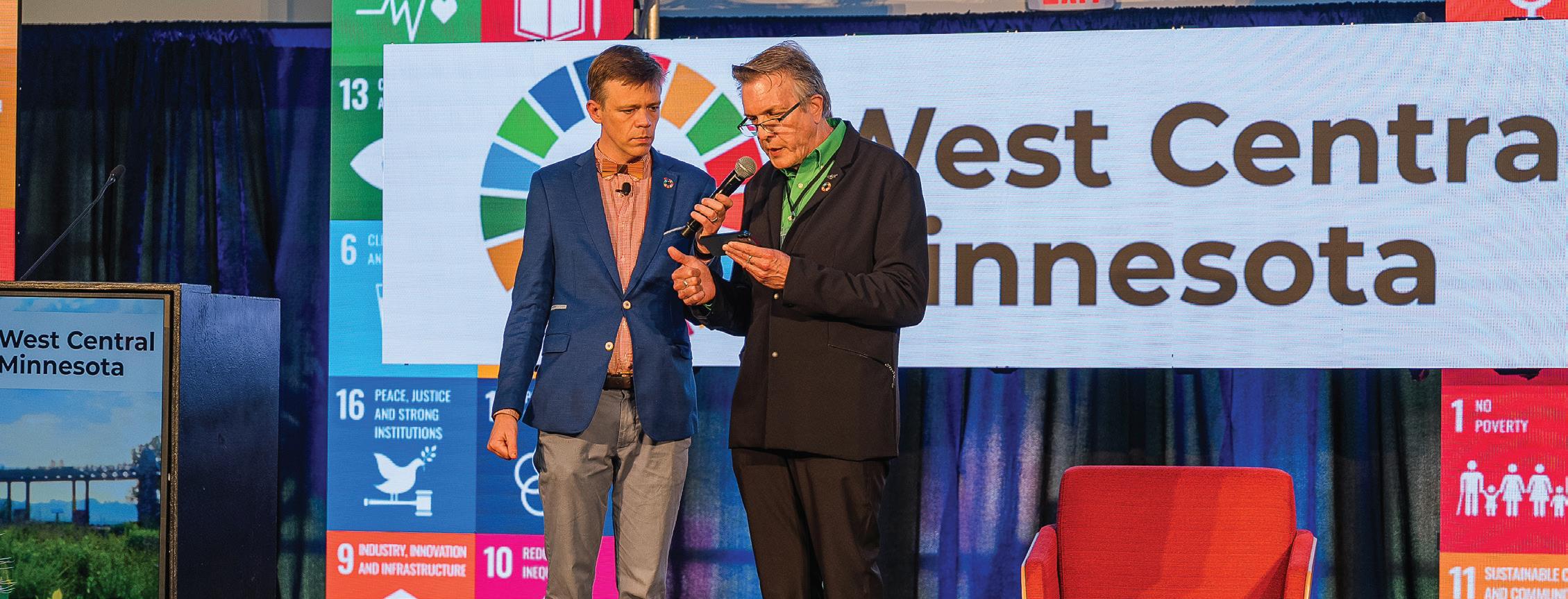
14’s discussion on Life Below Water focused on addressing the key challenges of funding, cultural attitudes, and awareness regarding water conservation and sustainability. Participants noted that a significant hurdle is the general lack of awareness and respect for water resources, which hinders sustainability efforts. Additionally, securing funding for water-related initiatives remains a persistent challenge, making it difficult to implement and sustain impactful projects.
To tackle these issues, the group proposed a multifaceted approach. One major initiative is launching a “Respect Water” cultural campaign aimed at educating the community and raising awareness about the importance of protecting bodies of water. This campaign would focus on changing cultural attitudes toward water, emphasizing its value and the need to protect it. Another practical action is initiating an “Adopt a River” pilot project, where volunteers clean up a local section of a river. This project not only addresses pollution directly but also uses the collected trash to create art, further raising awareness about environmental issues.
In addition to these actions, fostering partnerships with local organizations is seen as crucial for enhancing water conservation and sustainability efforts. By building connections and collaborating with local and state governmental agencies, nonprofits, and community groups, Room 14 aims to pool resources, share knowledge, and amplify the impact of their initiatives. These combined efforts are expected to create a more sustainable and community-driven approach to protecting and preserving water resources in the region.
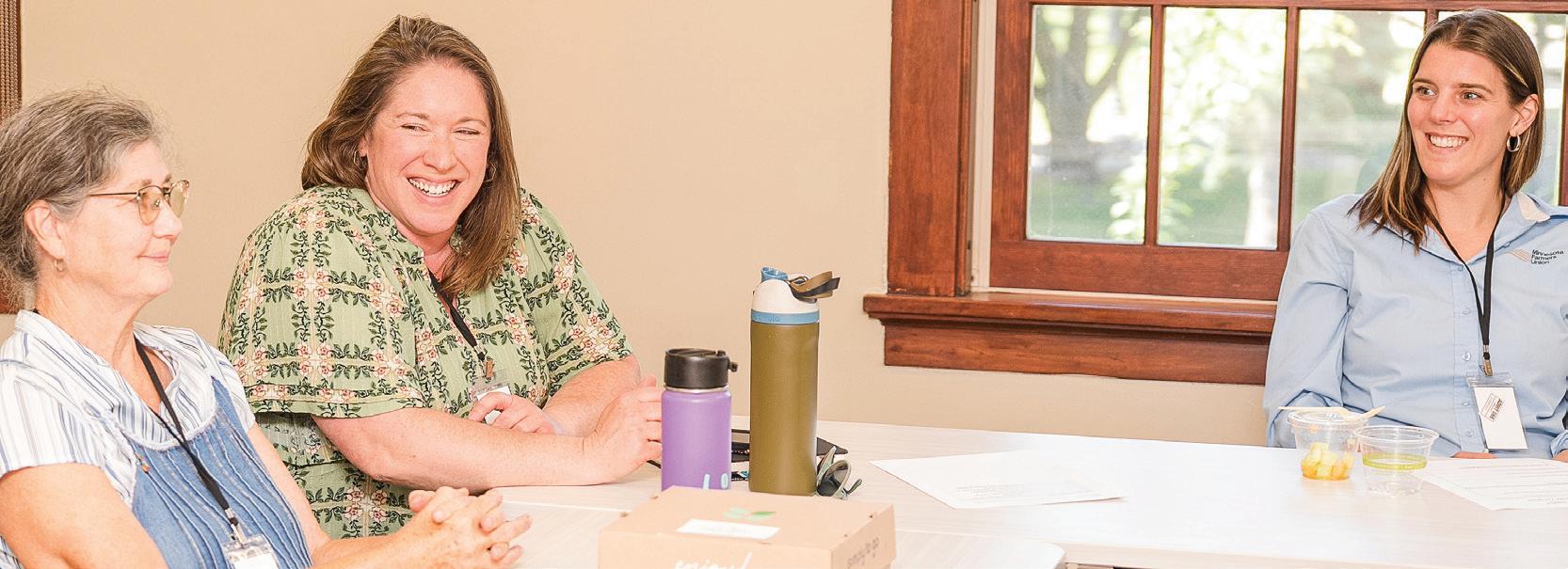

Room 15’s discussion centered around developing a comprehensive strategy to boost engagement and action in the agricultural and environmental sectors. Key groups were identified as essential for success, including writers to share impactful stories, policymakers and lobbying communities to drive policy changes, and educators to foster nature communicators. Collaborative efforts with organizations, such as Climate Corps and Green Corps, and youth groups, such as FFA and 4-H, were emphasized to showcase positive outcomes and support community-based conservation.
The group highlighted the need for communications training and support for small-town newspapers to spread positive stories about climate and conservation. They advocated for supporting tangible programs like Lawns to Legumes and Soil Health Financial Assistance Program Grants, which offer real benefits and risk reduction. Outdoor education was also deemed crucial to creating lifelong conservationists by engaging children and promoting a deep understanding of nature. These steps were seen as vital to building strong support for conservation initiatives.
The group also acknowledged challenges that could hinder progress, such as political divides, media influence, government red tape, and inertia in land management. Economic challenges, a disconnect from the land, and educational gaps about food sources and outdoor recreation further complicate efforts. The discussion highlighted the need for a more inclusive dialogue to overcome these barriers and drive meaningful change.
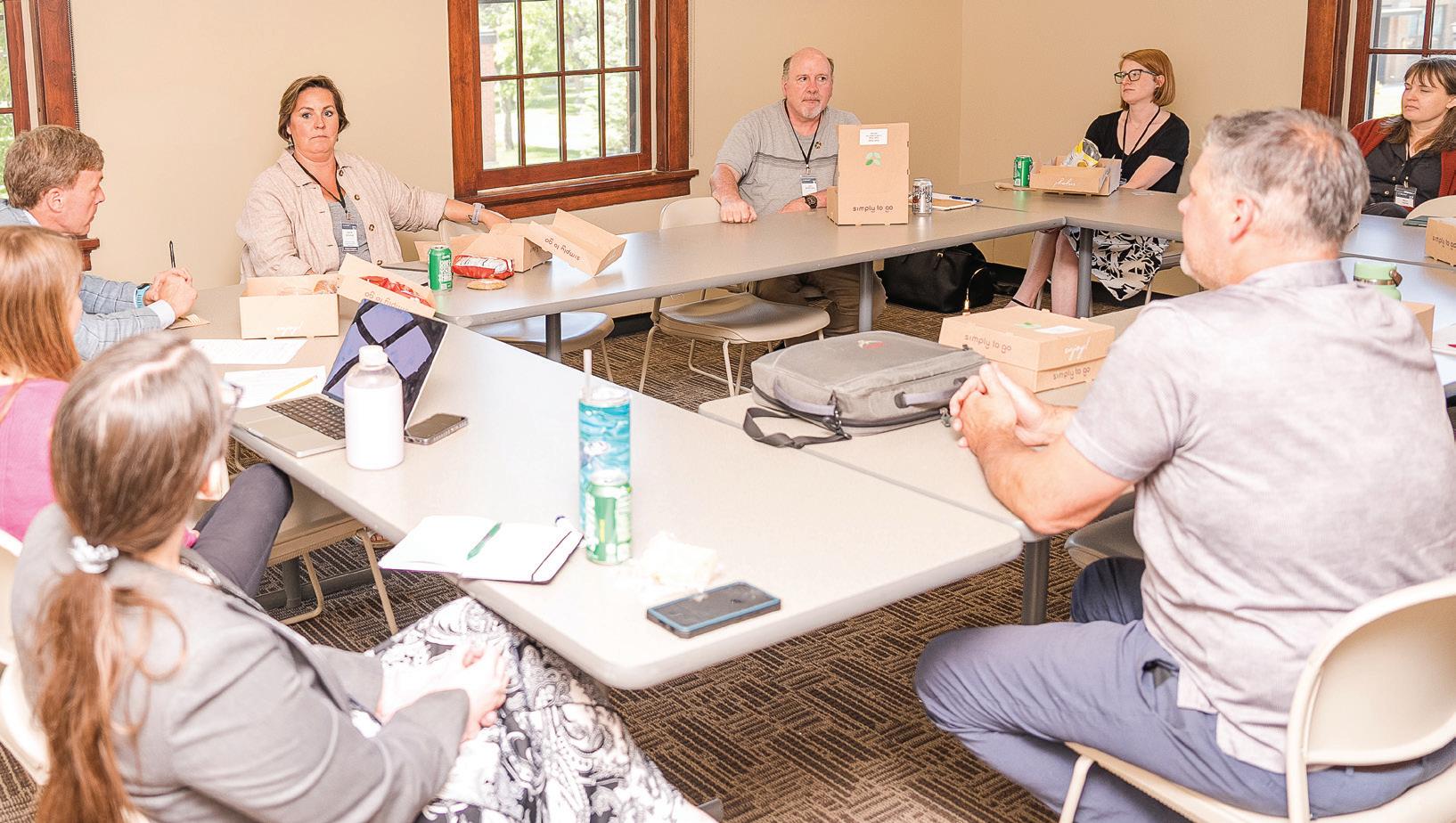
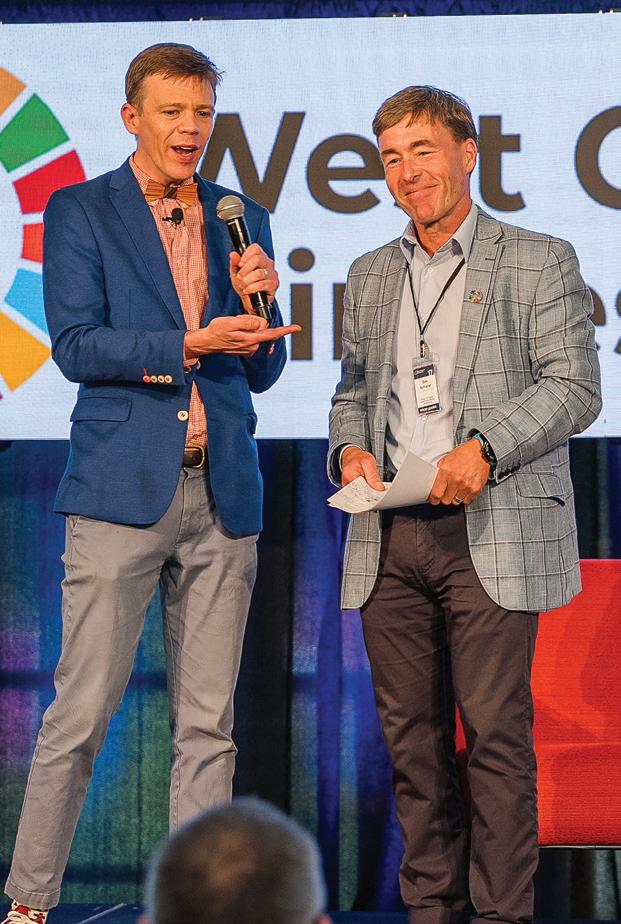
Room 16’s discussion focused on addressing the growing challenges of declining trust and increasing polarization in government, politics, journalism, education, and other institutions. Participants highlighted the pervasive distrust in the justice system and the media, noting that minorities, youth, and the elderly are often overlooked. They emphasized the need for a renewed focus on positivity, solutions, and the common good to combat the rise of zero-sum thinking and the erosion of connectedness in communities.
To tackle these issues, the group proposed promoting solutions journalism and creating platforms for diverse voices. By encouraging media outlets to focus on solution-oriented stories and amplifying underrepresented perspectives, they aim to rebuild trust in journalism and foster greater community engagement. Additionally, the group suggested organizing screenfree community events to encourage face-to-face interactions, reduce intimidation, and strengthen the sense of connectedness among participants.
Another key action discussed was the implementation of task-oriented community projects. These projects would focus on collective problem-solving and collaboration, making participation more accessible and less intimidating. By promoting practical, actiondriven events, Room 16 hopes to encourage broader community involvement and address the underlying issues of distrust and polarization. Overall, the discussion underscored the importance of fostering trust, inclusivity, and collaboration to create a more connected and resilient community.

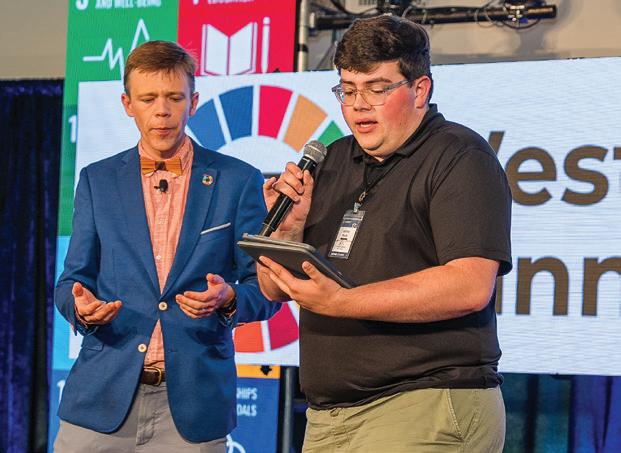
Room 17’s discussion focused on fostering partnerships to achieve the Sustainable Development Goals (SDGs) by shifting the focus from goals to values, making the work feel more personal. For example, a community value of “No Hunger” can take a different shape than an abstract goal of eliminating hunger. Participants identified key challenges such as a lack of interpersonal communication skills, limited opportunities for leaders to engage community members, and the discomfort in disagreeing constructively, leading to a disconnect between citizens and their city councils. They also highlighted the difficulty for BIPOC and immigrant community members to speak to predominantly white city council members, resulting in unmet needs and unaddressed problems.
To address these challenges, the group proposed developing training and workshops aimed at improving interpersonal communication skills. These initiatives would help community members and leaders engage more effectively, fostering better understanding and collaboration. The discussion also highlighted the need to promote relationship-building and critical thinking within communities. By focusing on these areas, participants believe they can create synergies across different groups, making values more relatable and actionable, and reducing feelings of isolation. Additionally, promoting direct engagement with local government over social media was emphasized to facilitate more productive interactions.
Finally, Room 17 emphasized the importance of knowledge sharing and creating synergies across communities and organizations. They suggested establishing a network or clearinghouse for sharing knowledge and resources, as well as creating a community member forum where organizations could convene community members and city leaders to discuss challenges and develop strategies. Sorting best practices by community size was also recommended to ensure relevance, preventing smaller communities from trying to replicate projects from much larger ones. By leveraging the strengths and experiences of various groups, participants aim to create a more interconnected and supportive community, better equipped to tackle the challenges of sustainable development.
West Central Initiative is a regional development organization and community foundation dedicated to fostering sustainable development and economic prosperity in west central Minnesota. Serving a population of approximately 250,000 people across nine counties and White Earth Nation, West Central Initiative integrates the Sustainable Development Goals into its strategic framework. Its initiatives span various areas, including climate resiliency, rural belonging, rural democracy, early childhood care and education support, community planning, lending, fundraising, granting, and more. Through collaboration with local partners, businesses, and governments, the organization strives to create resilient communities that thrive economically, socially, and environmentally. By addressing critical needs and leveraging regional assets, it aims to build a brighter future for all who call their region “home.” Learn more at wcif.org.
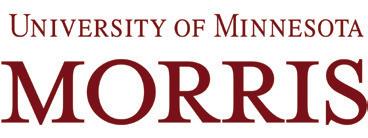
The University of Minnesota Morris, founded in 1960, is a public liberal arts college known for its rich history and commitment to academic excellence. The University serves a diverse student body, attracting students from various backgrounds and cultures. The University of Minnesota Morris stands out for its strong emphasis on sustainability, integrating environmental stewardship into its curriculum, campus operations, and community initiatives. As a leader in green energy and sustainable practices, the University provides students with unique opportunities to engage in research and projects that promote ecological responsibility. Through a blend of rigorous academics and a dedication to sustainability, the University prepares students to be thoughtful, engaged citizens and leaders in a rapidly changing world. Learn more at morris.umn.edu.

The City of Morris is renowned for its innovative Morris Model concept. This collaborative framework aims to foster sustainability, resilience, and quality of life through a holistic approach to community development. Recently featured in The Wall Street Journal, The Morris Model integrates local government, educational institutions, businesses, and residents to work together on initiatives such as renewable energy, energy efficiency, waste reduction, and sustainable transportation. By promoting environmental stewardship and social well-being, the Morris Model seeks to create a thriving, sustainable community that serves as a model for other cities. Through these collective efforts, the City of Morris is leading the way in demonstrating how rural communities can achieve sustainable development and resilience in the face of global challenges. Learn more at morrismodel.org.
dashboard is a comprehensive tool designed to track regional and state progress toward achieving the SDGs. It provides real-time data and visualizations, enabling stakeholders to monitor advancements and identify areas needing improvement. By offering accessible and transparent insights, the SDGs dashboard empowers communities, policymakers, and organizations to make informed decisions and drive sustainable development efforts.
Visit wcif.org/sdg-dashboard to learn more.
